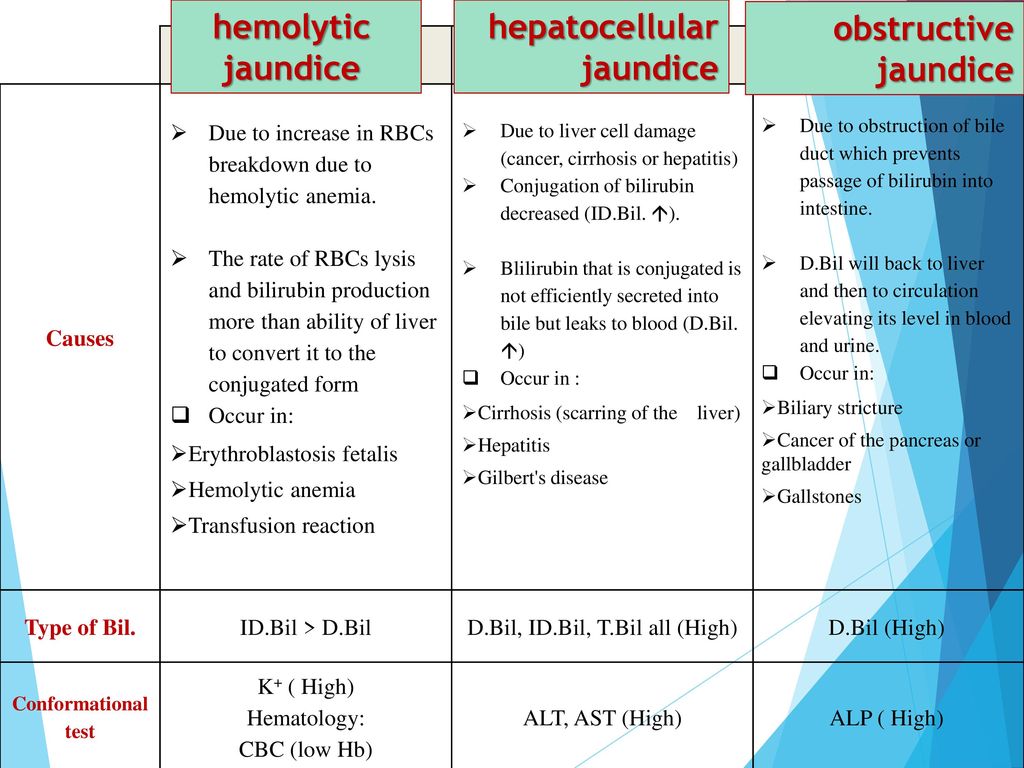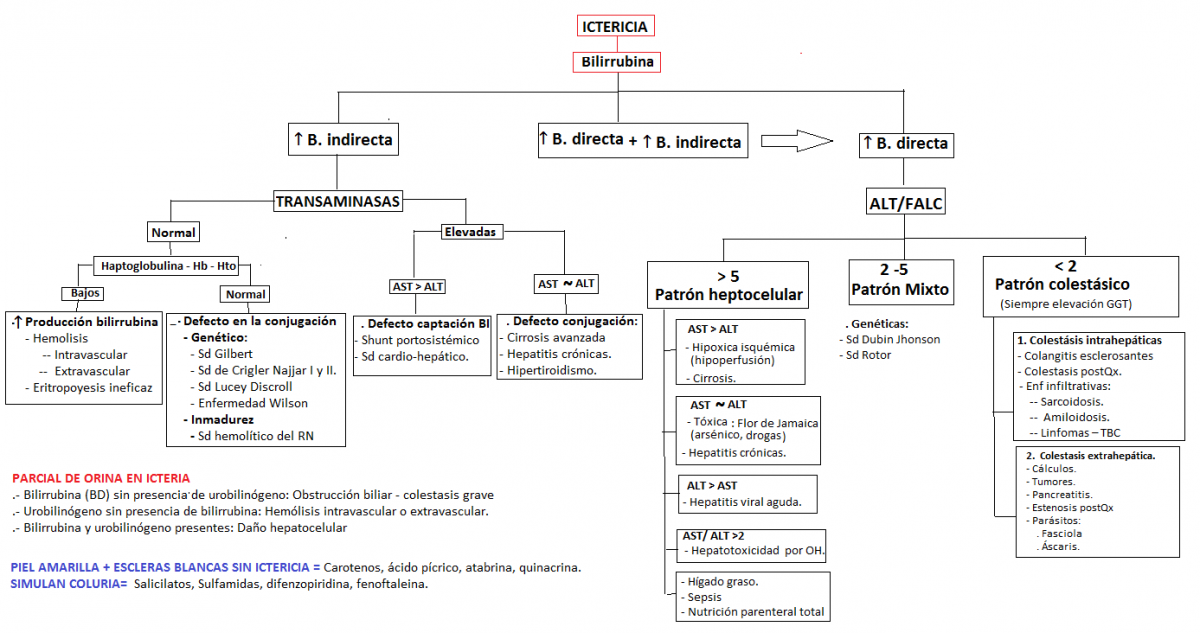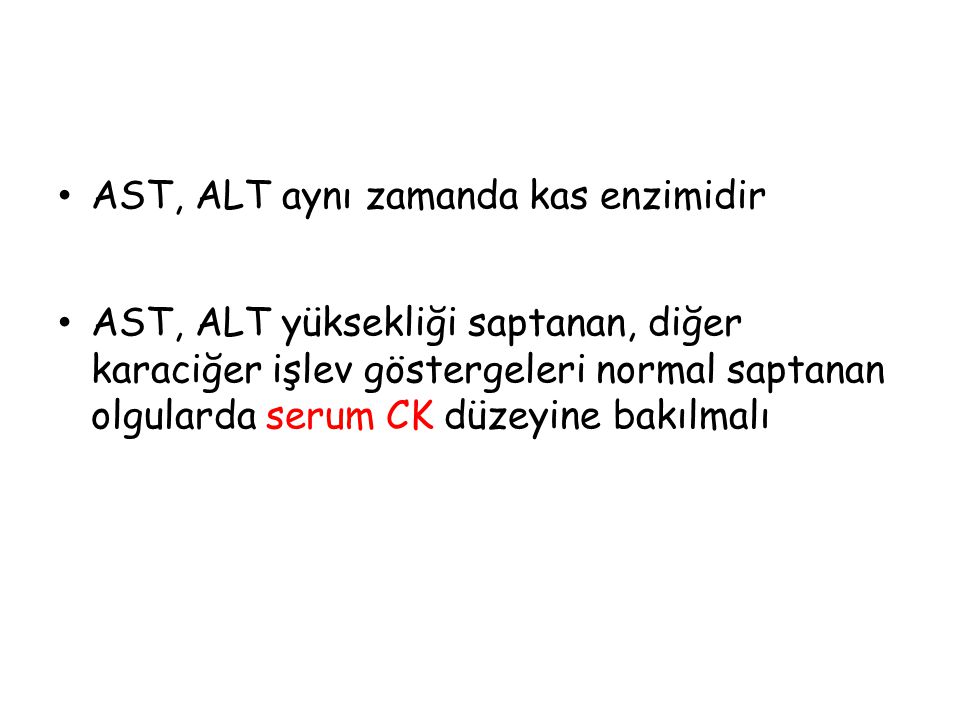What causes high ast and alt. Understanding AST and ALT Levels: Causes, Symptoms, and Implications for Liver Health
What are AST and ALT. How do these liver enzymes indicate liver health. What causes elevated AST and ALT levels. What are the symptoms of liver damage. How are abnormal liver function tests evaluated.
The Role of AST and ALT in Liver Function Assessment
Aspartate aminotransferase (AST) and alanine aminotransferase (ALT) are crucial enzymes in assessing liver health. These enzymes, when found in elevated levels in the bloodstream, can indicate liver damage or disease. But what exactly are AST and ALT, and how do they reflect liver function?
AST, also known as serum glutamic-oxaloacetic transaminase (SGOT), is an enzyme produced primarily by the liver, but also found in smaller amounts in other organs such as the heart, kidneys, brain, and muscles. ALT, on the other hand, is more specific to the liver and is considered a more accurate indicator of liver health.
When liver cells are damaged or die, these enzymes are released into the bloodstream, causing their levels to rise. This is why blood tests measuring AST and ALT levels are commonly used to detect liver problems and monitor liver function.
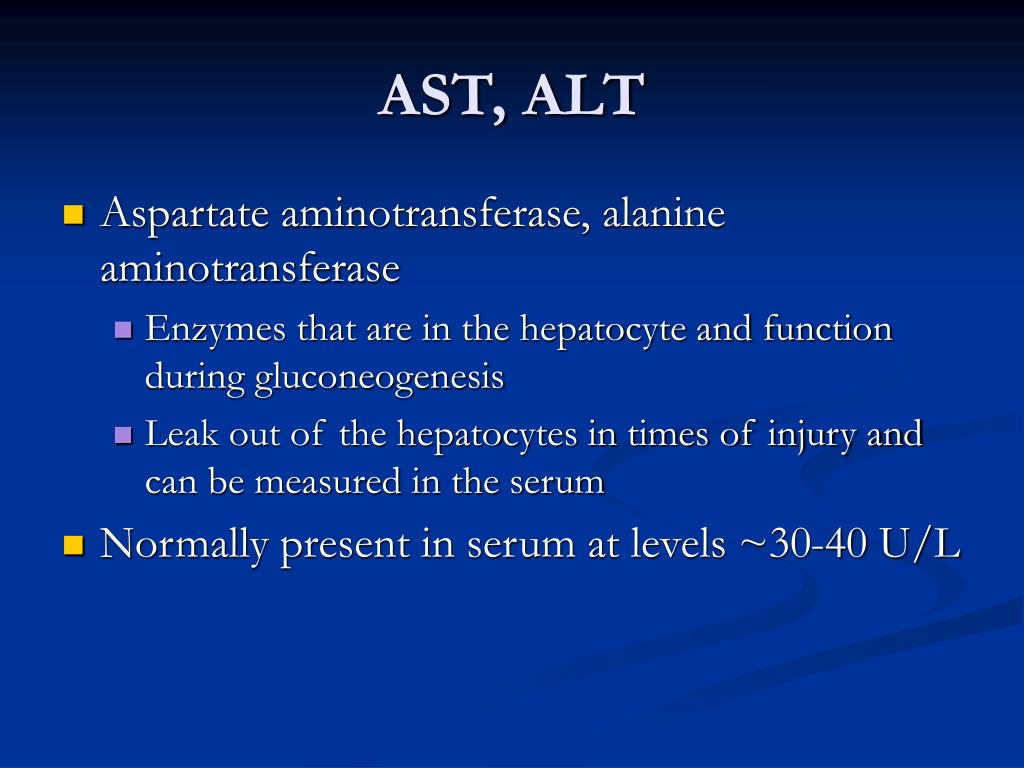
Normal Ranges for AST and ALT
What are the normal ranges for AST and ALT? According to standard laboratory measurements:
- Normal AST levels:
- Males: 10 to 40 units/L
- Females: 9 to 32 units/L
- Normal ALT levels typically range from 7 to 56 units/L for both males and females
It’s important to note that these ranges can vary slightly depending on the laboratory and the specific testing methods used. Always consult with your healthcare provider for interpretation of your specific results.
Common Causes of Elevated AST and ALT Levels
Elevated AST and ALT levels can be indicative of various liver conditions and other health issues. Understanding these causes can help in early detection and treatment of potential liver problems. Here are some common reasons for high AST and ALT levels:
Liver-Related Causes
- Chronic hepatitis (viral or autoimmune)
- Cirrhosis (long-term liver scarring)
- Fatty liver disease (alcoholic and non-alcoholic)
- Liver cancer
- Bile duct obstruction
- Drug-induced liver injury
- Acute viral hepatitis
Non-Liver Related Causes
- Heart conditions (e.g., myocardial infarction)
- Muscle disorders or injury
- Celiac disease
- Hemochromatosis (iron overload)
- Thyroid disorders
Is there a difference in how AST and ALT levels rise in various conditions? Indeed, the ratio of AST to ALT can provide additional diagnostic information. In alcoholic liver disease, for instance, the AST level is typically higher than the ALT level, often in a ratio greater than 2:1. Conversely, in viral hepatitis and other forms of liver injury, ALT is usually higher than AST.
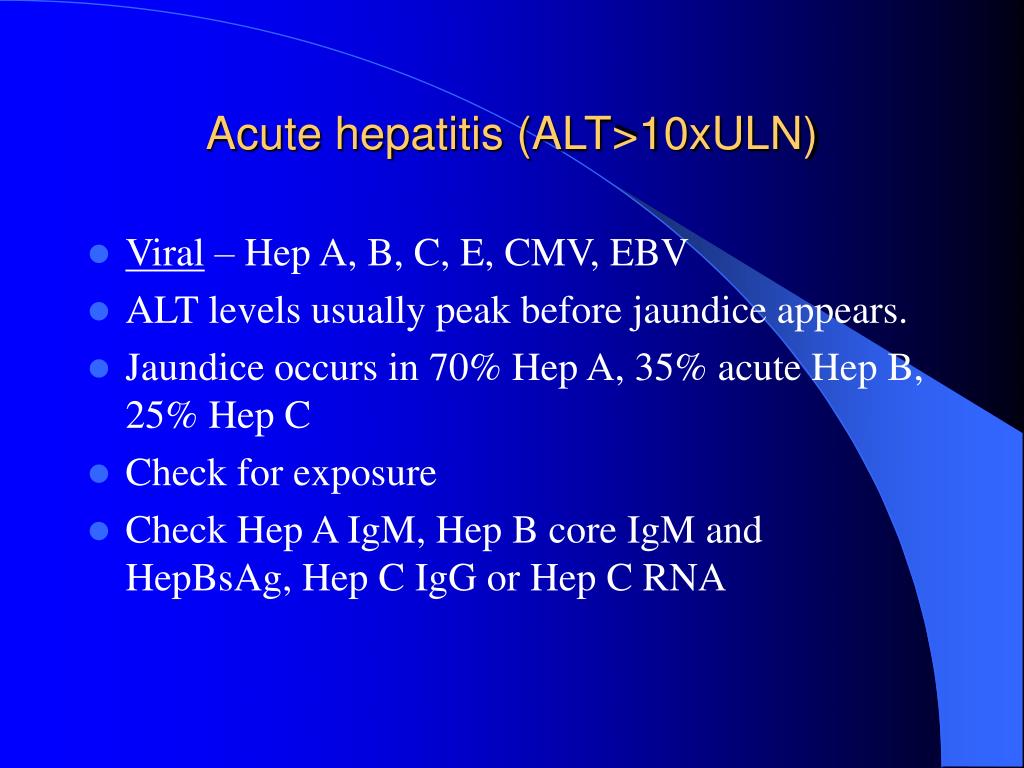
Symptoms Associated with Liver Damage
While elevated AST and ALT levels may not cause symptoms themselves, they can be indicators of underlying liver damage. Recognizing the symptoms of liver problems is crucial for early detection and treatment. What signs should you be aware of?
- Jaundice (yellowing of skin and eyes)
- Fatigue and weakness
- Abdominal pain or swelling
- Nausea and loss of appetite
- Dark urine
- Pale or tar-colored stools
- Itchy skin
- Easy bruising or bleeding
If you experience any of these symptoms, especially in combination with risk factors for liver disease, it’s important to consult a healthcare provider promptly. Early detection and intervention can significantly improve outcomes in many liver conditions.
Diagnostic Process for Abnormal Liver Function Tests
When AST and ALT levels are found to be elevated, healthcare providers typically follow a systematic approach to determine the underlying cause. How is this evaluation conducted?
- Medical history review: This includes assessing risk factors such as alcohol consumption, medication use, and family history of liver disease.
- Physical examination: Looking for signs of liver disease such as jaundice, abdominal tenderness, or enlarged liver.
- Additional blood tests: These may include:
- Alkaline phosphatase (ALP)
- Gamma-glutamyl transferase (GGT)
- Serum bilirubin
- Prothrombin time or international normalized ratio (INR)
- Serum albumin
- Imaging studies: Ultrasound, CT scan, or MRI of the liver may be ordered to visualize liver structure and detect any abnormalities.
- Liver biopsy: In some cases, a small sample of liver tissue may be taken for microscopic examination.
This comprehensive approach allows healthcare providers to accurately diagnose the cause of elevated liver enzymes and develop an appropriate treatment plan.

Treatment Approaches for Elevated Liver Enzymes
Treatment for elevated AST and ALT levels depends on the underlying cause. In many cases, addressing the root cause can lead to normalization of liver enzyme levels. What are some common treatment approaches?
- Lifestyle modifications:
- Reducing or eliminating alcohol consumption
- Maintaining a healthy weight
- Following a balanced diet
- Regular exercise
- Medication management:
- Treating underlying conditions (e.g., antiviral medications for hepatitis)
- Adjusting or discontinuing medications that may be causing liver damage
- Targeted therapies:
- Medications to reduce inflammation in autoimmune hepatitis
- Cholesterol-lowering drugs for non-alcoholic fatty liver disease
- Regular monitoring:
- Periodic liver function tests to track progress
- Follow-up imaging studies as needed
The effectiveness of treatment is often reflected in the normalization of AST and ALT levels over time. However, it’s important to note that in some chronic liver conditions, enzyme levels may remain slightly elevated even with appropriate treatment.

Prevention Strategies for Maintaining Liver Health
Preventing liver damage and maintaining healthy AST and ALT levels is an important aspect of overall health. What strategies can individuals employ to protect their liver?
- Limit alcohol consumption: Excessive alcohol intake is a major cause of liver damage.
- Maintain a healthy weight: Obesity is a risk factor for non-alcoholic fatty liver disease.
- Exercise regularly: Physical activity helps maintain a healthy weight and can improve liver function.
- Practice safe sex and avoid sharing needles: This reduces the risk of contracting hepatitis B and C.
- Get vaccinated: Hepatitis A and B vaccines can prevent these forms of viral hepatitis.
- Use medications wisely: Follow dosage instructions and avoid mixing medications with alcohol.
- Eat a balanced diet: A diet rich in fruits, vegetables, and whole grains supports liver health.
- Stay hydrated: Adequate water intake helps the liver function optimally.
By implementing these preventive measures, individuals can significantly reduce their risk of liver disease and maintain healthy AST and ALT levels.

The Impact of Lifestyle Factors on Liver Enzyme Levels
Lifestyle factors play a crucial role in liver health and can significantly influence AST and ALT levels. How do various lifestyle choices affect these enzyme levels?
Diet and Nutrition
A balanced diet rich in fruits, vegetables, whole grains, and lean proteins supports liver health. Conversely, a diet high in saturated fats, sugar, and processed foods can contribute to fatty liver disease and elevated enzyme levels. Specific nutrients that benefit liver health include:
- Antioxidants (found in berries, leafy greens, and nuts)
- Omega-3 fatty acids (found in fatty fish, flaxseeds, and walnuts)
- Fiber (found in whole grains, legumes, and vegetables)
Physical Activity
Regular exercise has been shown to improve liver function and reduce the risk of fatty liver disease. Physical activity helps maintain a healthy weight, improves insulin sensitivity, and reduces inflammation, all of which contribute to liver health.
Alcohol Consumption
Excessive alcohol intake is a major cause of liver damage and can lead to significantly elevated AST and ALT levels. The liver metabolizes alcohol, and chronic exposure can lead to inflammation, fatty liver, and eventually cirrhosis. Limiting alcohol consumption or abstaining entirely can help maintain healthy liver enzyme levels.
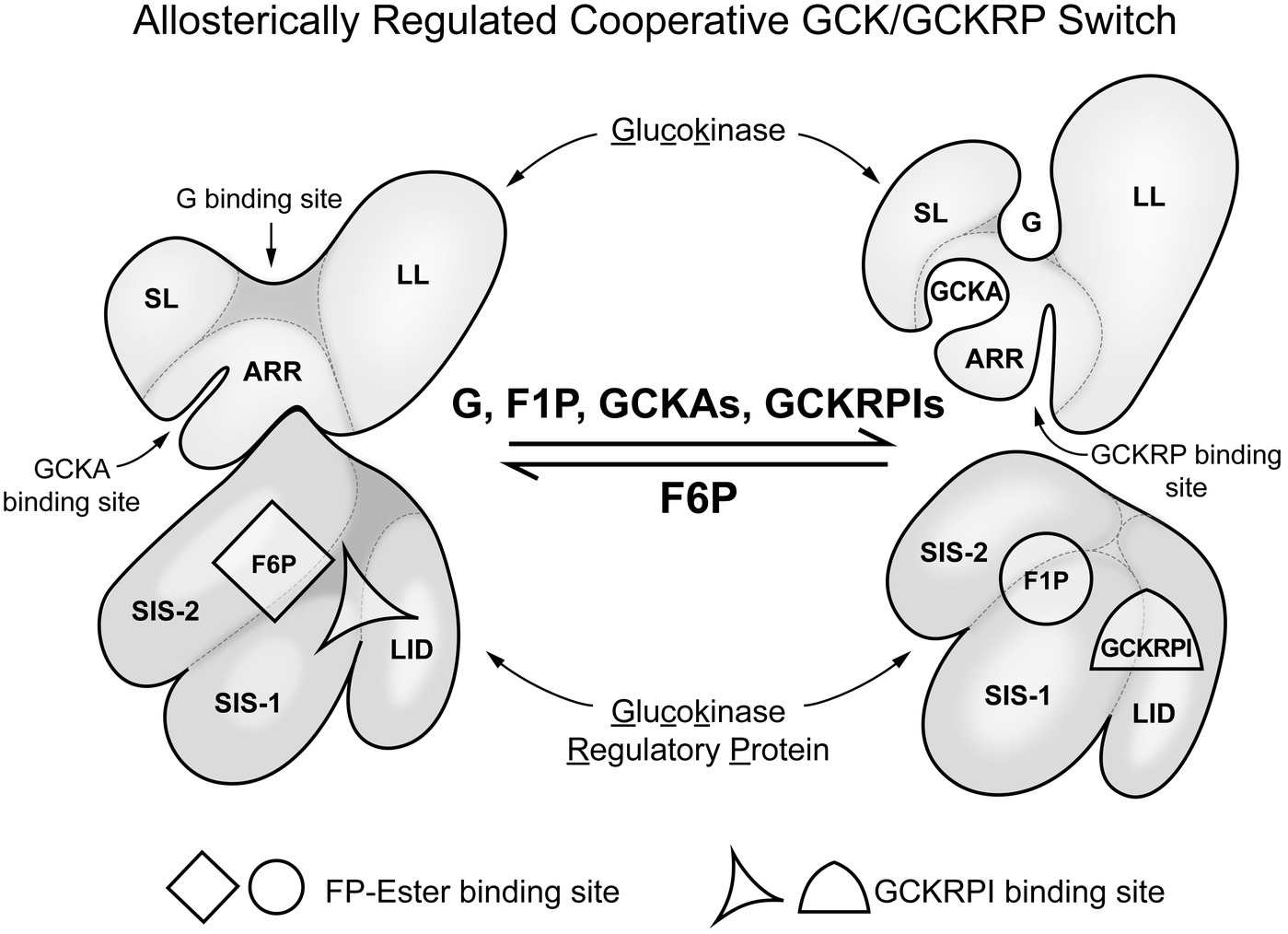
Stress Management
Chronic stress can indirectly affect liver health by promoting unhealthy behaviors such as overeating or excessive alcohol consumption. Additionally, stress can impact immune function and inflammation, potentially exacerbating liver conditions. Implementing stress-reduction techniques such as meditation, yoga, or regular exercise can support overall liver health.
By making positive lifestyle choices, individuals can significantly impact their liver health and maintain optimal AST and ALT levels.
Special Considerations for AST and ALT Testing
While AST and ALT tests are valuable tools in assessing liver health, there are several special considerations to keep in mind when interpreting results. What factors can influence these test results?
Medications and Supplements
Certain medications and supplements can affect AST and ALT levels, either by directly impacting liver function or by interfering with the test results. Some examples include:
- Acetaminophen (Tylenol)
- Some antibiotics
- Statins (cholesterol-lowering medications)
- Certain herbal supplements (e.g., kava, comfrey)
It’s crucial to inform your healthcare provider about all medications and supplements you’re taking before undergoing liver function tests.

False Positive Results
In some cases, elevated AST or ALT levels may not necessarily indicate liver damage. Conditions that can lead to false positive results include:
- Recent strenuous exercise (can temporarily elevate enzyme levels)
- Hemolysis (breakdown of red blood cells during blood collection)
- Muscle disorders or injuries
Age and Gender Considerations
AST and ALT levels can vary slightly based on age and gender. For instance:
- Children may have higher upper limits of normal compared to adults
- Older adults may have slightly lower baseline levels
- Men typically have slightly higher upper limits of normal compared to women
Pregnancy
During pregnancy, mild elevations in liver enzymes can occur as a normal physiological change. However, significant elevations may indicate pregnancy-related liver conditions such as HELLP syndrome or acute fatty liver of pregnancy, which require prompt medical attention.
Understanding these special considerations helps in the accurate interpretation of AST and ALT test results, ensuring that appropriate follow-up and treatment decisions are made based on a comprehensive assessment of an individual’s health status.
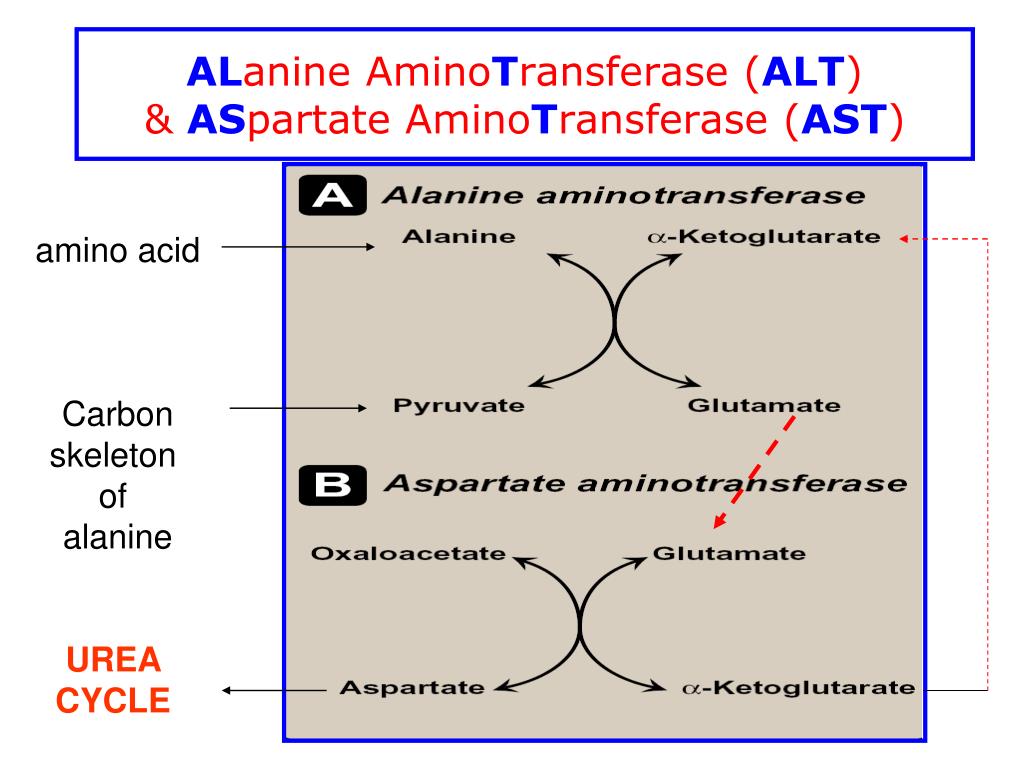
Aspartate Aminotransferase (AST) Test (aka SGOT): High vs. Low Levels
The aspartate aminotransferase (AST) test is a blood test that checks for liver damage. Your doctor might order this test to find out if you have liver disease and to monitor your treatment.
Your liver is an organ that has many important jobs.
It makes a fluid called bile that helps your body digest food. It also removes waste products and other toxins from your blood. It produces proteins, as well as substances that help your blood clot. Alcohol or drug use and diseases such as hepatitis can damage your liver and keep it from doing these jobs.
AST is an enzyme your liver makes. Other organs, like your heart, kidneys, brain, and muscles, also make smaller amounts. AST is also called SGOT (serum glutamic-oxaloacetic transaminase).
Normally, AST levels in your blood are low. When your liver is damaged, it puts more AST into your blood, and your levels rise.
A high AST level is a sign of liver damage, but it can also mean you have damage to another organ that makes it, like your heart or kidneys. That’s why doctors often do the AST test together with tests of other liver enzymes.
That’s why doctors often do the AST test together with tests of other liver enzymes.
Why Would I Need This Test?
Your doctor can order an AST test if you have symptoms of liver damage, such as:
Other reasons to have this test:
Your doctor might also want you to get this test to see if treatments you take for liver disease are working.
The AST test is also part of a comprehensive metabolic panel — a blood test your doctor does as part of a routine exam.
How Do I Prepare?
You don’t need any special preparation for the ALT test.
Tell your doctor what drugs or supplements you take. Some medicines can affect the results of this test.
What Happens During the Test?
A nurse or lab tech will take a sample of your blood — usually from a vein in your arm. They will first tie a band around the upper part of your arm to make your vein fill with blood and swell up. Then they will clean an area on your arm with an antiseptic and put a needle in one of your veins.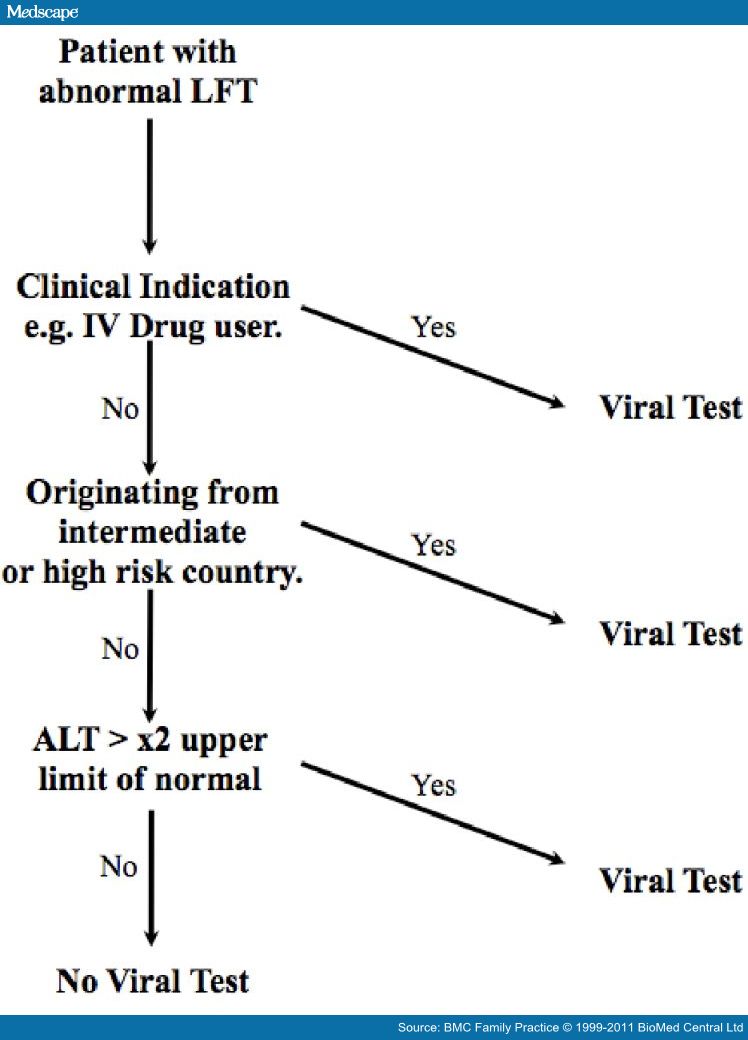 Your blood will go into a vial or tube.
Your blood will go into a vial or tube.
The blood test should only take a couple of minutes. After your blood is drawn, the lab tech will take off the band and pull out the needle. They’ll put a piece of gauze and a bandage where the needle went in to stop the bleeding.
What Are the Risks?
The AST blood test is safe. Risks are usually minor, and can include:
- Bleeding
- Bruising
- Infection
- Pain when the needle is inserted
- Fainting or feeling dizzy
What Do the Results Mean?
You should have the results in about a day. They are given in units per liter (units/L). Normal ranges are:
- Males: 10 to 40 units/L
- Females: 9 to 32 units/L
Your exact range may depend on which lab your doctor uses. Talk with them about the specifics of your case.
Higher-than-normal AST levels can be caused by:
- Chronic (ongoing) hepatitis
- Cirrhosis (long-term damage and scarring of the liver)
- Blockage in the bile ducts that carry digestive fluid from the liver to the gallbladder and intestine
- Liver cancer
Very high AST levels can be caused by:
- Acute viral hepatitis
- Damage to the liver from drugs or other toxic substances
- A blockage in blood flow to the liver
Your doctor might also compare your AST and ALT levels.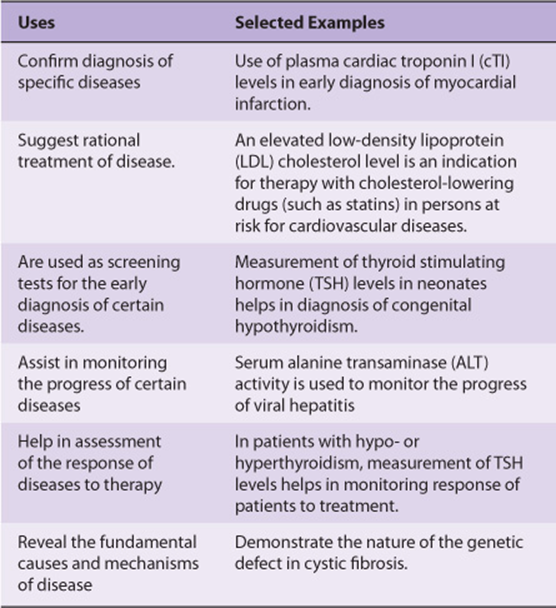 If you have liver disease, usually your ALT level will be higher than your AST level.
If you have liver disease, usually your ALT level will be higher than your AST level.
These other conditions not tied to your liver can also raise your AST level:
Some diseases or medicines you take can cause a “false positive” result on the AST test. This means your test is positive, even though you don’t have liver damage. Any of these can cause a false positive result:
Will I Take Other Tests?
AST is usually done as part of a group of liver function tests called a liver panel. It’s often ordered with a test for alanine aminotransferase (ALT), another liver enzyme.
ALT is more accurate than AST at detecting liver disease. It can more accurately show whether the problem is in your liver or in another part of your body, like your heart or muscles.
Your doctor can compare the amount of ALT to AST in your blood to find out whether you have liver damage or a problem with another organ, such as your heart.
Your doctor might also do other tests of enzymes and proteins your liver makes, such as:
Talk with your doctor to make sure you understand all of your liver test results.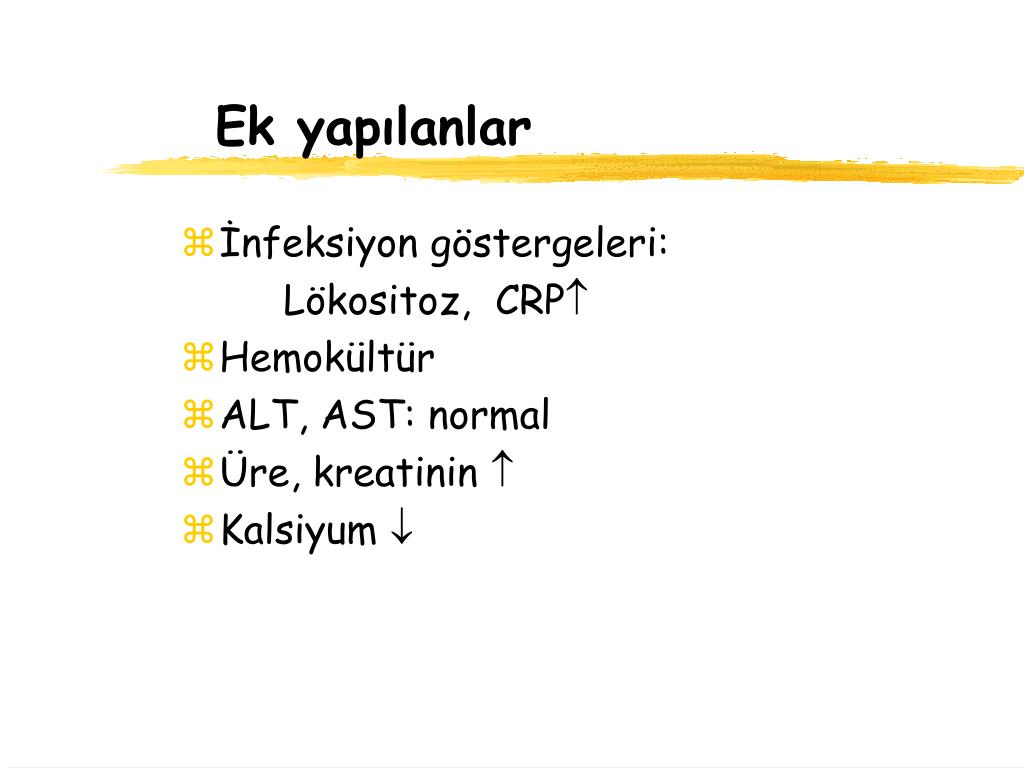 Also find out how these results might affect your treatment.
Also find out how these results might affect your treatment.
Evaluation of abnormal liver function tests
Commonly available tests include alanine transaminase (ALT) and aspartate transaminase (AST), alkaline phosphatase (ALP), gammaglutamyl transferase, serum bilirubin, prothrombin time, or international normalised ratio and serum albumin (box 1). They reflect different functions of the liver—that is, to excrete anions (bilirubin), hepatocellular integrity (transaminases), formation and the subsequent free flow of bile (bilirubin and ALP), and protein synthesis (albumin).
Box 1:
Normal values
Alanine transaminase: 0–45 IU/l.
Aspartate transaminase: 0–35 IU/l.
Alkaline phosphatase: 30–120 IU/l.
Gammaglutamyl transferase: 0–30 IU/l.
Bilirubin: 2–17 μmol/l.

Prothrombin time: 10.9–12.5 sec.
Albumin: 40–60 g/l.
Other tests are often performed by a specialist and include hepatitis serology, iron and copper studies, α1-antitrypsin levels, and autoantibodies. These relate to the possible aetiology of the abnormality.
The enzymes tested are most commonly raised in liver disease but some enzymes are also present in other tissues and consequently may be raised in other conditions.
When faced with an abnormality in an asymptomatic patient it is imperative to establish that there is an abnormality in the first place, that is statistically significant (the normal value is the mean value in a group of healthy individuals ±2SD). The tests should be repeated and when confirmed appropriate steps be taken.
CLINICAL ASSESSMENT
A detailed history should be taken and full physical examination performed with a particular emphasis on alcohol consumption, risk factors for viral hepatitis (intravenous drug use, sexual promiscuity, homosexual relations, tattoos, non-sterile ear or body piercing, blood or blood product transfusions), medications used currently or previously, herbal or alternative remedies, and occupational exposure to toxins (box 2).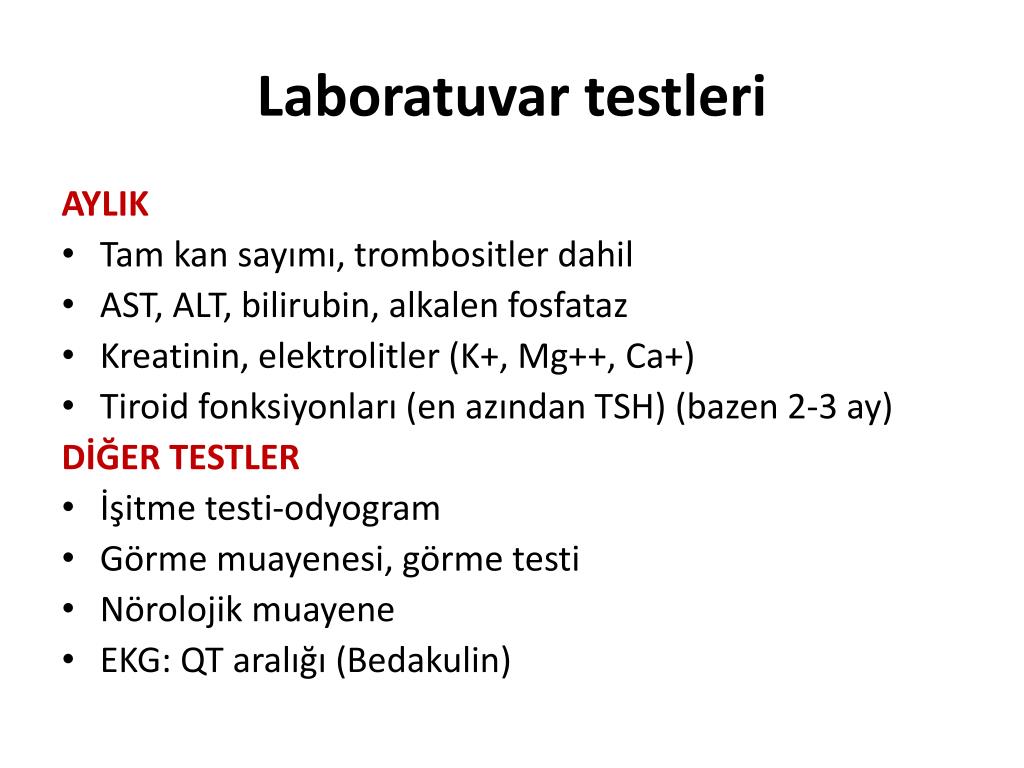
Box 2:
Clinical assessment
Alcohol consumption.
Risk factors for viral hepatitis:
Intravenous drug use.
Sexual promiscuity.
Homosexual relations.
Tattoos.
Non-sterile ear or body piercing.
Blood or blood product transfusions.
Residence in developing nations.
Medications.
Occupational exposure to toxins.

Other factors such as diabetes, obesity and hyperlipidaemia in non-alcoholic fatty liver disease, and family history (for Wilson’s disease, haemochromatosis, autoimmune disease) may be significant.
BILIRUBIN
Bilirubin is formed from the lysis of red cells (the haem component) within the reticuloendothelial system. Unconjugated bilirubin is transported to the liver loosely bound to albumin. It is water insoluble and therefore cannot be excreted in urine. Conjugated bilirubin is water soluble and appears in urine.
Within the liver it is conjugated to bilirubin glucoronide and subsequently secreted into bile and the gut respectively. Intestinal flora breaks it down into urobilinogen, some of which is reabsorbed and either excreted via the kidney into urine or excreted by the liver into the gastrointestinal tract. The remainder is excreted in the stool as stercobilinogen giving stool its brown colour.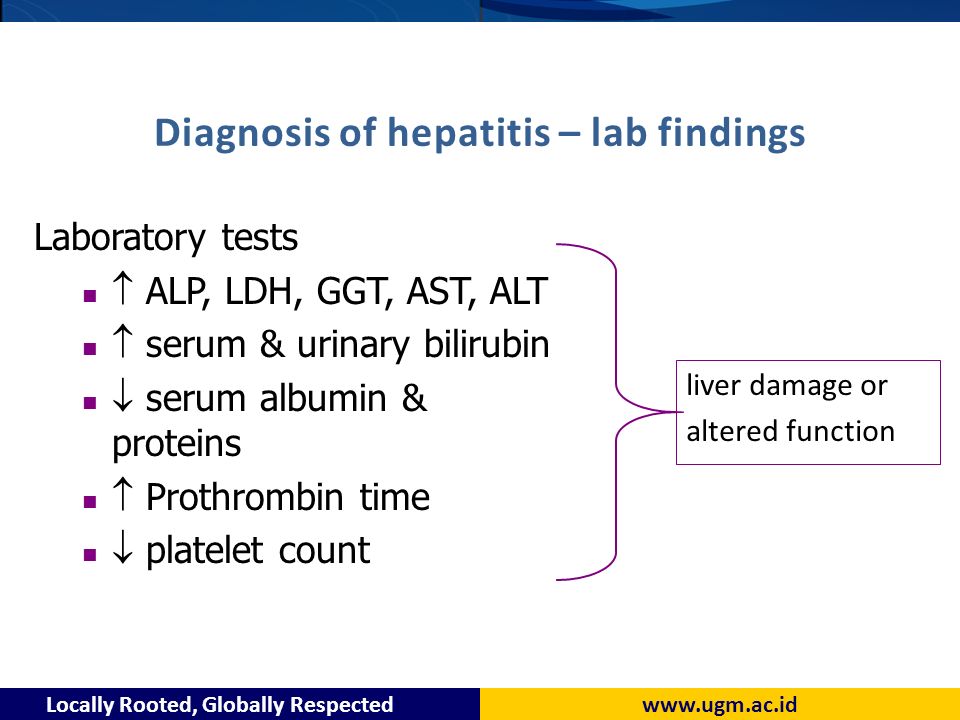
Serum bilirubin is normally mainly in an unconjugated form reflecting a balance between production and hepatobiliary excretion. Bilirubin production increases in haemolysis, ineffective erythropoiesis, resorption of a haematoma, and rarely in muscle injury. In all these cases the bilirubin is mainly in an unconjugated form. Conjugated hyperbilirubinaemia characteristically occurs in parenchymal liver disease and biliary obstruction.
UNCONJUGATED HYPERBILIRUBINAEMIA
Unconjugated hyperbilirubinaemia (indirect bilirubin fraction >85% of total bilirubin) occurs with increased bilirubin production or in defects in hepatic uptake or conjugation, which in turn may be inherited or acquired (box 3).
Box 3:
Causes of isolated hyperbilirubinaemia
Unconjugated
Increased bilirubin production.

Decreased hepatic uptake.
Decreased conjugation.
Conjugated
Dubin-Johnson syndrome.
Rotor’s syndrome.
Gilbert’s syndrome deserves particular mention. This is a common, benign disorder characterised by unconjugated hyperbilirubinaemia, which is exacerbated by fasting. It does not require any specific treatment and the patient should be reassured.
Disproportionate isolated unconjugated hyperbilirubinaemia may also be seen in fulminant Wilson’s disease. It is interesting that the ALP is low in such situations.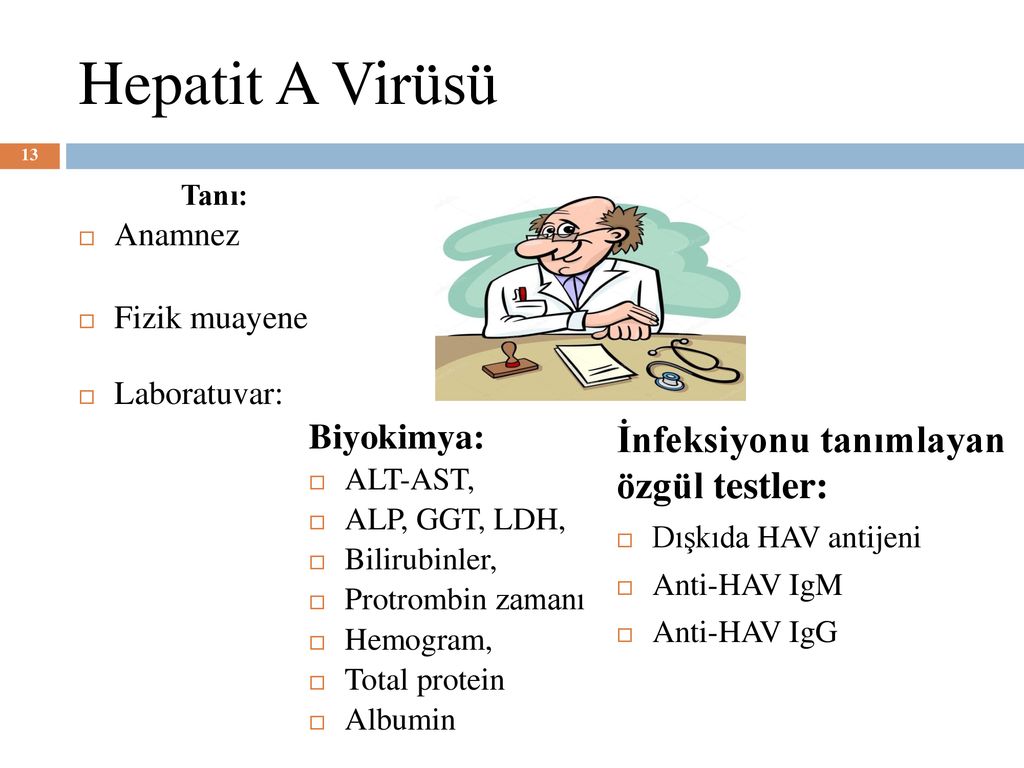 Haemolysis is believed to result from copper release in the blood stream with resulting red cell lysis.
Haemolysis is believed to result from copper release in the blood stream with resulting red cell lysis.
It is worth mentioning here that bilirubin levels of more than 85 μmol/l in the presence of normal hepatic function cannot be explained by chronic haemolysis alone.1,2
CONJUGATED HYPERBILIRUBINAEMIA (DIRECT BILIRUBIN >50% OF TOTAL BILIRUBIN)
This occurs in inherited or acquired defects in hepatic excretion. Bilirubin levels have prognostic significance in alcoholic hepatitis, primary biliary cirrhosis, and in acute liver failure. However a disproportionate rise in conjugated bilirubin has limited diagnostic value. As conjugated bilirubin is excreted in urine, bilirubin levels rarely exceed 510 μmol/l in the absence of renal failure or haemolysis.3
AMINOTRANSFERASES
These include AST and ALT. They are an excellent marker of hepatocellular injury. They participate in gluconeogenesis by catalysing the transfer of amino groups from aspartic acid or alanine to ketoglutaric acid to produce oxaloacetic acid and pyruvic acid respectively.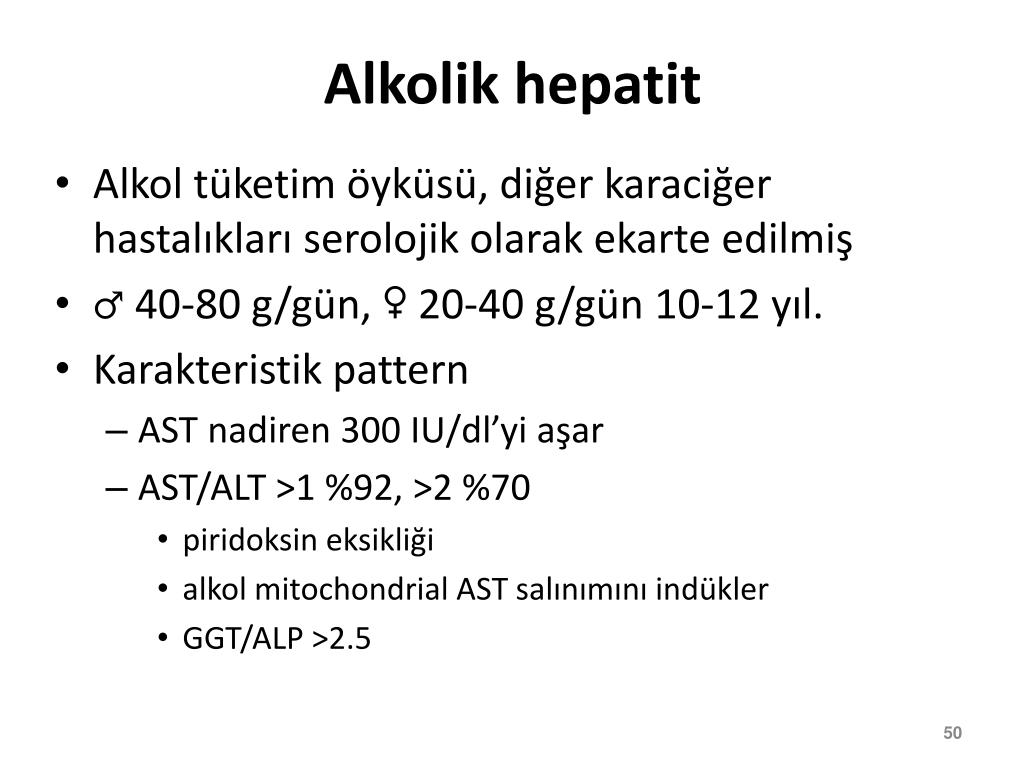
AST is present in cytosolic and mitochondrial isoenzymes and is found in the liver, cardiac muscle skeletal muscle, kidneys, brain, pancreas, lungs, leucocytes, and red cells.4 It is less sensitive and specific for the liver.
ALT, a cytosolic enzyme is found in its highest concentrations in the liver and is more specific to the liver.4
Hepatocellular injury and not necessarily cell death is the trigger for release of these enzymes into the circulation.
When faced with an abnormality, the first step should be to assess the degree of abnormality. The tests should probably be repeated if the abnormality is mild. Further investigation is warranted if repeated tests confirm abnormality. Very high levels should prompt further evaluation without delay.
Common causes are non-alcoholic fatty liver disease, alcoholic liver disease, chronic hepatitis B and C, autoimmune liver disease, haemochromatosis, Wilson’s disease, α1– antitrypsin deficiency, and coeliac disease.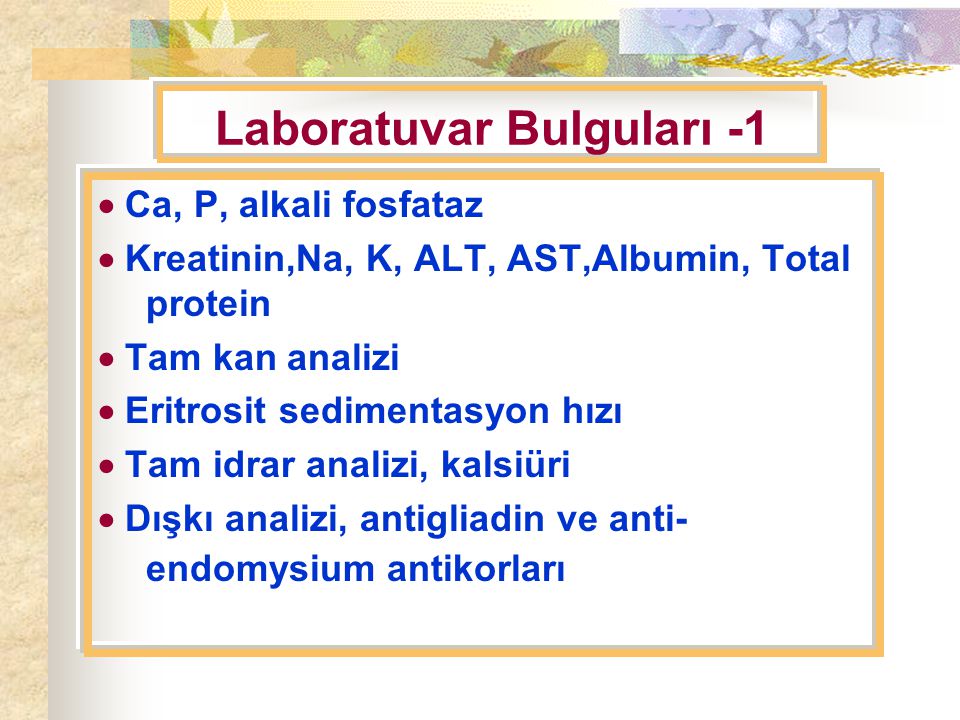
CAUSES OF RAISED AMINOTRANSFERASES
Alcohol
A reliable history is helpful; in reality this can be difficult. A biochemical clue is the ratio of AST to ALT (2:1 at least), reflecting the low level of activity of ALT in people with alcoholic liver disease.
A gammaglutamyl transferase level of twice the normal with an AST/ALT ratio of 2:1 or more is highly suggestive of alcohol abuse.5 Gammaglutamyl transferase is not specific to alcohol and hence cannot be used as an isolated test.4
Notably, AST levels of more than eight times normal and ALT levels more than fives times normal are exceptionally rare in alcoholic liver disease.5 Conversely ALT may be normal even in the face of severe alcoholic liver disease. Typically aminotransferase levels are less than 300 U/l in alcohol induced liver injury unless of course other insults such as viral or Paracetamol induced liver injury are superimposed on alcoholic liver disease, when serum aminotransferase levels may exceed 1000 U/l.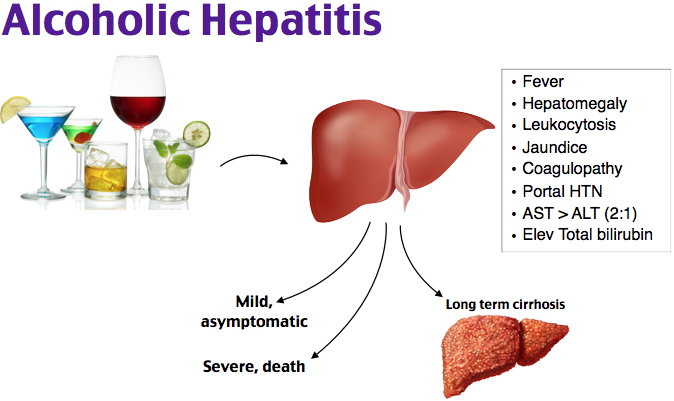 Very high aminotransferase levels are characteristically seen in ischaemic liver injury, acute viral hepatitis, and drug or toxin induced liver injury and occasionally in acute obstructing choledocholithiasis.
Very high aminotransferase levels are characteristically seen in ischaemic liver injury, acute viral hepatitis, and drug or toxin induced liver injury and occasionally in acute obstructing choledocholithiasis.
Medication
Several drugs may cause raised liver enzymes, commonly non-steroidal anti-inflammatory drugs, antibiotics, statins, antiepileptics, and antituberculosis drugs (box 4). A specific inquiry should be made about herbal remedies, alternative medications, and substance abuse. The commonest drug induced cause of a massive aminotransferase rise is paracetamol overdose, typically at doses of 10 g or more but also at lower doses particularly in the context of other insults such as alcohol.
Box 4:
Common causes of raised transaminases
Alcohol.
Medications: non-steroidal anti-inflammatory drugs, antibiotics, HMG Co-A-reductase inhibitors, antiepileptic drugs, antituberculous drugs, herbal medications, illicit drug use.

Non-alcoholic steatohepatosis.
Chronic hepatitis B and C.
Autoimmune diseases.
Haemochromatosis.
Wilson’s disease.
Congestive cardiac failure and ischaemic hepatitis.
α1-Antitrypsin deficiency.
Coeliac disease.
Endocrine disease: hypothyroidism, Addison’s disease.
Diseases of striate muscle.
Glycogen storage diseases.
Drug induced liver enzyme rise may present as an enzyme rise soon after starting a drug.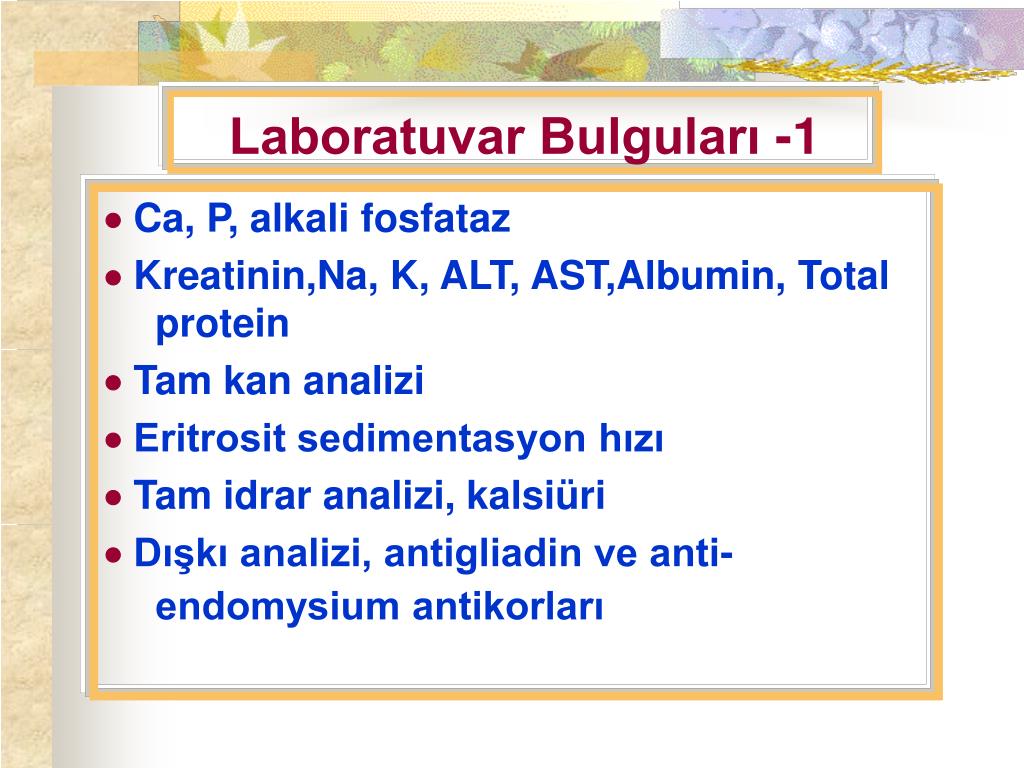 A logical step is to stop the drug and see if the results normalise. If the drug is essential for the patient a risk benefit assessment will be required. A liver biopsy may be necessary to assess the severity of the injury or confirm a drug induced reaction.
A logical step is to stop the drug and see if the results normalise. If the drug is essential for the patient a risk benefit assessment will be required. A liver biopsy may be necessary to assess the severity of the injury or confirm a drug induced reaction.
Viral hepatitis
Hepatitis B and/or C are common causes and hepatitis serology should thus be requested. We will consider the diagnostic laboratory features in turn.
If hepatitis B surface antigen (HbsAg) is positive then HBeAg and HBe antibody results are normally available automatically. A positive HbsAg may represent an acute or chronic infection. HbsAg becomes positive 2–8 weeks before biochemical evidence of jaundice or liver damage. Once HbsAg has appeared other markers of viral replication—namely, hepatitis B virus DNA and HbeAg—will also appear. IgM anti-HBc, the best serological test for acute hepatitis B, is detectable within 2–4 weeks of the appearance of the surface antigen. If positive, it suggests acute hepatitis B infection and HbsAg and anti-HBs should be obtained in six months.
If positive, it suggests acute hepatitis B infection and HbsAg and anti-HBs should be obtained in six months.
The infection may have resolved (HbsAg negative, anti-HBs positive) or may have become chronic (HbsAg positive, anti-HBs negative). If IgM anti-HBc is negative suggesting a chronic hepatitis B virus infection, the HbeAg and anti-HBe will help determine whether the infection in the carrier is actively replicating or is quiescent.6 Patients with a positive HBe Ag and hepatitis B virus DNA may be considered for a liver biopsy.4 Family members and intimate contacts of HbsAg positive individuals should be screened for exposure to hepatitis B by checking HbsAg and anti-HBc. If anti-HBc negative, family members/intimate contacts would be candidates for immunoprophylaxis if not previously vaccinated.6
A positive hepatitis C antibody in a patient with risk factors would reflect previous contact with the virus. Antibodies to hepatitis C virus are not protective. The presence of antihepatitis C in a patient with an abnormal ALT, and risk factors for hepatitis C infection would strongly suggest current hepatitis C infection. The initial test for antihepatitis C is the enzyne linked immunosorbent assay (ELISA) test. The test is very sensitive but false positive tests are not infrequent even with third generation ELISAs as seen in hypergammaglobulinaemia of autoimmune hepatitis. If antihepatitis C is negative it is unlikely that the patient has hepatitis C. The specificity of ELISA testing may be improved by addition of the recombinant immunoblot assay for antihepatitis C.3 No methods of culturing the virus are available. Consequently detection of the virus in serum is used as a marker of the virus itself. Hepatitis C RNA detected by polymerase chain reaction is the current gold standard.7 A positive test would suggest active viral infection and replication. Polymerase chain reaction testing may be done by quantitative or qualitative methods.
The presence of antihepatitis C in a patient with an abnormal ALT, and risk factors for hepatitis C infection would strongly suggest current hepatitis C infection. The initial test for antihepatitis C is the enzyne linked immunosorbent assay (ELISA) test. The test is very sensitive but false positive tests are not infrequent even with third generation ELISAs as seen in hypergammaglobulinaemia of autoimmune hepatitis. If antihepatitis C is negative it is unlikely that the patient has hepatitis C. The specificity of ELISA testing may be improved by addition of the recombinant immunoblot assay for antihepatitis C.3 No methods of culturing the virus are available. Consequently detection of the virus in serum is used as a marker of the virus itself. Hepatitis C RNA detected by polymerase chain reaction is the current gold standard.7 A positive test would suggest active viral infection and replication. Polymerase chain reaction testing may be done by quantitative or qualitative methods.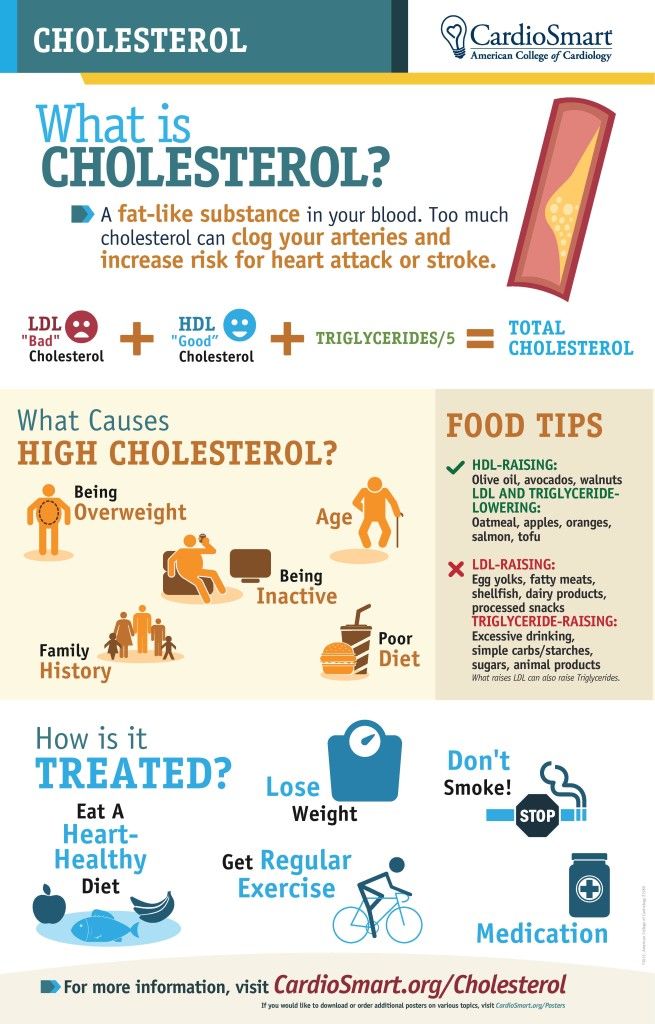 The sensitivity of quantitative testing varies between 2000–200 000 viral copies/ml whereas qualitative tests will detect as few as 100 viral copies/ml usually within one week of exposure.3 Quantitative tests should therefore not be used for diagnosis as these can miss patients with a low level viraemia. Due consideration would be given for antiviral therapy by a specialist. If the polymerase chain reaction is negative despite a positive antibody test, it should be retested in three months to ensure that it was not a false negative.
The sensitivity of quantitative testing varies between 2000–200 000 viral copies/ml whereas qualitative tests will detect as few as 100 viral copies/ml usually within one week of exposure.3 Quantitative tests should therefore not be used for diagnosis as these can miss patients with a low level viraemia. Due consideration would be given for antiviral therapy by a specialist. If the polymerase chain reaction is negative despite a positive antibody test, it should be retested in three months to ensure that it was not a false negative.
AUTOIMMUNE HEPATITIS
Autoimmune hepatitis is an unresolving inflammation of the liver of unknown cause that is associated with interface hepatitis on histological examination, hypergammaglobulinaemia, and autoantibodies. The typical clinical case is that of a young to middle aged woman (a ratio of female to male of 4:1) with raised transaminases in the absence of any other apparent cause. On serum protein electrophoresis around 80% or more patients demonstrate hypergammaglobulinaemia.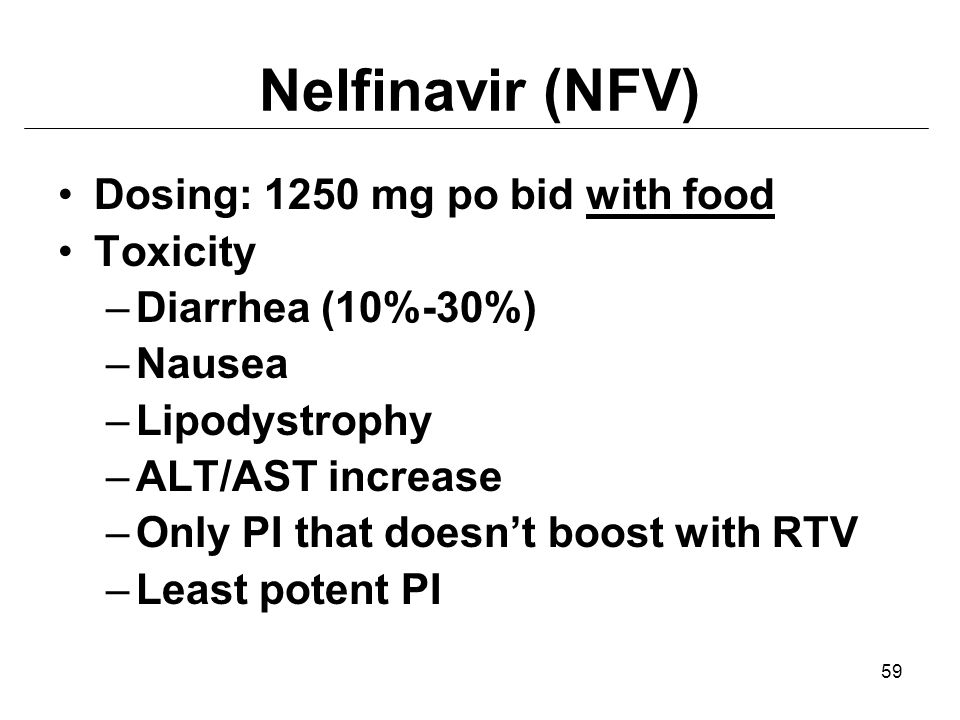 8 Polyclonal immunoglobulins more than twice normal are highly suggestive.4
8 Polyclonal immunoglobulins more than twice normal are highly suggestive.4
Appropriate tests would include immunoglobulins, antinuclear antibodies, antibodies to smooth muscle, antiliver-kidney microsomal antibodies and antibodies to the soluble liver antigen, which typify type 1, 2, and 3 autoimmune liver disease. Routine use of all three tests is not required. Liver biopsy is useful.
Type 1 autoimmune hepatitis is characterised by the presence of antinuclear antibody and/or smooth muscle (actin) antibodies. It is the most common form of the disease worldwide. Seventy percent are women less than 40 years old and over 30% have concurrent immune diseases, especially autoimmune thyroiditis, synovitis, or ulcerative colitis.
Type 2 autoimmune hepatitis is characterised by the presence of anti-LKM1 and is predominantly a disease of children aged 2–14 years. Patients with this form of hepatitis commonly have other concurrent autoimmune disorders such as type 1 diabetes, vitiligo, and autoimmune thyroiditis. Other organ specific autoimmune antibodies such as antibodies to parietal cells, islets of Langerhans, and thyroid may be found. These patients may have low serum levels of immunoglobulin A. Both type 1 and 2 autoimmune hepatitis generally respond well to steroids.
Other organ specific autoimmune antibodies such as antibodies to parietal cells, islets of Langerhans, and thyroid may be found. These patients may have low serum levels of immunoglobulin A. Both type 1 and 2 autoimmune hepatitis generally respond well to steroids.
Type 3 autoimmune hepatitis is the least established form of the disease and is characterised by the presence of antibodies to soluble liver antigen/liver pancreas. Patients with these antibodies are indistinguishable from patients with classical type 1 autoimmune hepatitis by age, gender distribution, frequency and nature of other autoantibodies, and responsiveness to steroids.
HEPATIC STEATOSIS AND NON-ALCOHOLIC STEATOHEPATITIS
Non-alcoholic steatohepatitis (NASH) has emerged in recent years as a chronic hepatic disease of clinical importance. NASH in fact represents a stage within a spectrum of histological disease known as non-alcoholic fatty liver disease. The diagnosis of NASH is usually suspected among individuals with asymptomatic increases in serum liver biochemistries; the presence of a raised body mass index, type 2 diabetes mellitus, or hyperlipidaemia; and no evidence of clinically relevant alcohol use.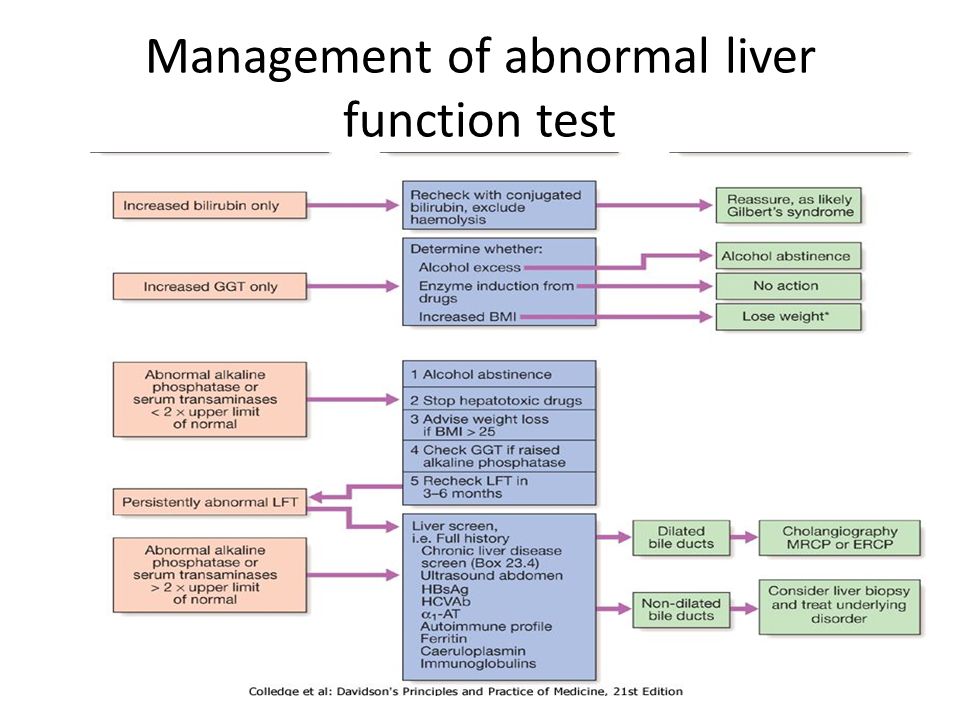 Mild increases in transaminases (less than four times normal) may be the only clinical clue and in fact it is fair to say that non-alcoholic fatty liver disease is probably the commonest cause of mild aminotransferase increases.9,10 The AST to ALT ratio is usually less than 1:1.10,11 Total bilirubin and albumin are usually normal. Leucopenia and thrombocytopenia should raise concerns for the existence of cirrhosis and occult portal hypertension. Ultrasonography, which should form part of the assessment of chronically raised transaminases, may show fatty infiltration. NASH can be proved by liver biopsy4 if felt appropriate in the clinical context.
Mild increases in transaminases (less than four times normal) may be the only clinical clue and in fact it is fair to say that non-alcoholic fatty liver disease is probably the commonest cause of mild aminotransferase increases.9,10 The AST to ALT ratio is usually less than 1:1.10,11 Total bilirubin and albumin are usually normal. Leucopenia and thrombocytopenia should raise concerns for the existence of cirrhosis and occult portal hypertension. Ultrasonography, which should form part of the assessment of chronically raised transaminases, may show fatty infiltration. NASH can be proved by liver biopsy4 if felt appropriate in the clinical context.
Steatosis tends to follow a benign course whereas NASH may progress to cirrhosis,12 though liver failure is uncommon. Programmed weight loss and addressing underlying factors form the basis of treatment.13
HAEMOCHROMATOSIS
This is a common autosomal recessive condition among white people associated with increased intestinal absorption of iron and deposition of excessive amounts of iron in the liver, pancreas, and other organs. Many patients are asymptomatic at diagnosis but clinical manifestations include cutaneous hyperpigmentation, diabetes mellitus, and chronic liver disease which may manifest as fatigue, abdominal pain, hepatomegaly, abnormal liver tests, cirrhosis, and hepatocellular carcinoma. Other clinical features include cardiomyopathy, cardiac conduction disorders, hypothyroidism, hypogonadism, impotence, and arthropathy.
Many patients are asymptomatic at diagnosis but clinical manifestations include cutaneous hyperpigmentation, diabetes mellitus, and chronic liver disease which may manifest as fatigue, abdominal pain, hepatomegaly, abnormal liver tests, cirrhosis, and hepatocellular carcinoma. Other clinical features include cardiomyopathy, cardiac conduction disorders, hypothyroidism, hypogonadism, impotence, and arthropathy.
A diagnosis of haemochromatosis is based upon a combination of clinical, laboratory, and pathological criteria. A raised serum ferritin raises suspicion of underlying haemochromatosis but a more reliable test is transferrin saturation. Measuring serum iron and total iron binding capacity gives a transferrin saturation index. A value more than 45% is suggestive.14 Serum ferritin being an acute phase reactant may also be raised in a number of other inflammatory states and as such is not a useful screening test.
Iron overload may be confirmed by liver biopsy to assess hepatic iron index (hepatic iron level in μmol/g of dry weight divided by the patient’s age). A ratio of more than 1.9 is consistent with homozygous hereditary haemochromatosis.14
A ratio of more than 1.9 is consistent with homozygous hereditary haemochromatosis.14
The discovery of the haemochromatosis gene (HFE) in 1996 has revolutionised the diagnosis of haemochromatosis. The mutation in HFE, located on the short arm of chromosome 6 responsible for the majority of cases is now available by genetic testing. Two point mutations have been designated C282Y and H63D. The greatest risk of iron overload exists in those who are homozygous for the C282Y mutation. Iron overload also occurs in a minority of those with other HFE mutations, especially compound heterozygotes who have one copy of C282Y and one copy of H63D and occasionally H63D homozygotes. It must be remembered that clinically significant iron overload can occur in the absence of HFE mutations. A negative gene test therefore does not exclude haemochromatosis. The HFE test is a polymerase chain reaction that is usually performed on a whole blood sample. The gene test is most useful in screening adult family members of an identified proband. It is often also useful in helping resolve ambiguous cases, such as iron overload associated with hepatitis C, alcoholic liver disease, or other causes of end stage liver disease. Before obtaining the HFE test an individual should be counselled about the risks, benefits, and alternatives of genetic testing by a qualified professional. There is concern about the possibility of insurance or employment based on the results of these tests. For this reason gene testing usually is not recommended for anyone younger than 18 years of age.
It is often also useful in helping resolve ambiguous cases, such as iron overload associated with hepatitis C, alcoholic liver disease, or other causes of end stage liver disease. Before obtaining the HFE test an individual should be counselled about the risks, benefits, and alternatives of genetic testing by a qualified professional. There is concern about the possibility of insurance or employment based on the results of these tests. For this reason gene testing usually is not recommended for anyone younger than 18 years of age.
The need for liver biopsy has decreased with genetic testing becoming available. Liver biopsy still remains the gold standard for assessing the degree of fibrosis. It is important to exclude cirrhosis because of the increased risk of developing hepatocellular carcinoma. In such patients screening with an ultrasound and α-fetoprotein every six months may be appropriate. A recent study15 confirmed that certain non-invasive predictors were accurate in excluding cirrhosis in C282Y homozygotes.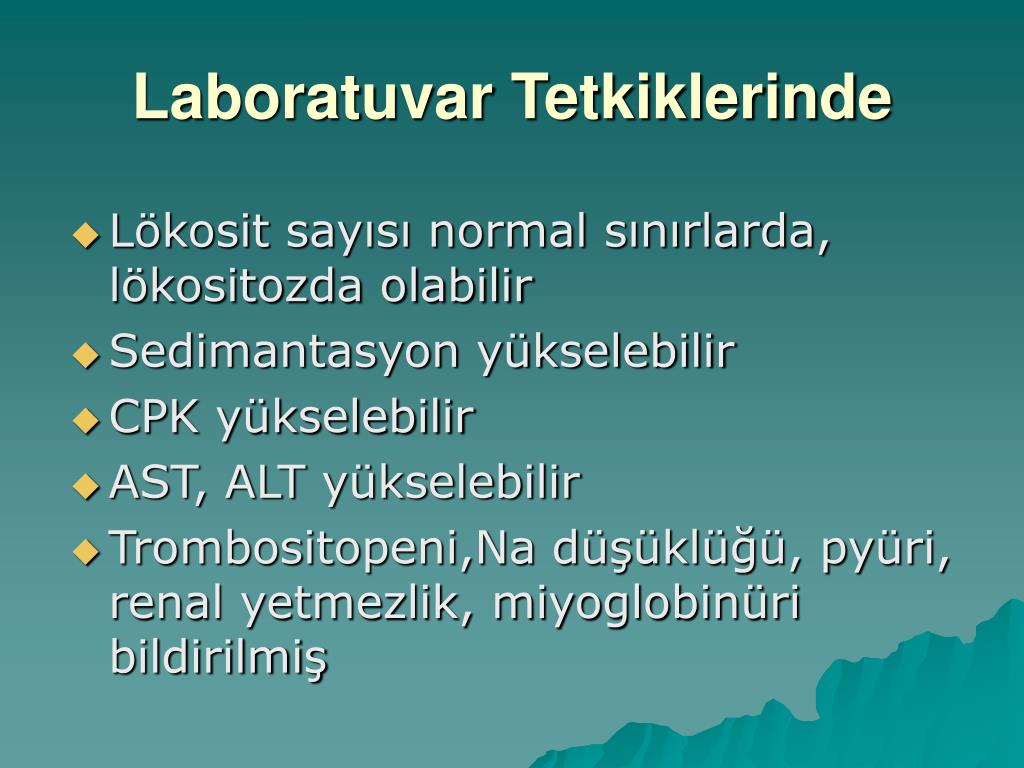 In this study, there were no cases of cirrhosis in 96 C282Y homozygotes who had serum ferritin levels lower than 1000 μg/l, normal AST values, and no evidence of hepatomegaly. These results have been confirmed in other studies. A serum ferritin of <1000 μg/l therefore seems to be the best predictor of the absence of cirrhosis in C282Y homozygotes. The positive predictive value of a serum ferritin >1000 μg/l is poor, however, as only about 50% of those with values of >1000 μg/l have cirrhosis. A liver biopsy is advisable in this group of patients to definitely assess for the presence of cirrhosis. Similar information is not available for non-C282Y homozygotes.
In this study, there were no cases of cirrhosis in 96 C282Y homozygotes who had serum ferritin levels lower than 1000 μg/l, normal AST values, and no evidence of hepatomegaly. These results have been confirmed in other studies. A serum ferritin of <1000 μg/l therefore seems to be the best predictor of the absence of cirrhosis in C282Y homozygotes. The positive predictive value of a serum ferritin >1000 μg/l is poor, however, as only about 50% of those with values of >1000 μg/l have cirrhosis. A liver biopsy is advisable in this group of patients to definitely assess for the presence of cirrhosis. Similar information is not available for non-C282Y homozygotes.
Liver biopsy is not essential in patients with hereditary haemochromatosis less than 40 years with normal liver function.4
WILSON’S DISEASE
This is a genetic disorder of biliary copper excretion. Usually detected between the ages of 5 and 25, it should also be considered in patients up to 40 years of age.
Serum caeruloplasmin, the usual screening test is reduced in approximately 85% of cases.4 Kayser-Fleischer rings may be a useful clinical clue. Caeruloplasmin may be normal and Kayser-Fleischer rings absent, in which case a 24 hour urinary copper excretion should be checked. Excretion of more than 100 μg suggests Wilson’s disease.
Liver biopsy will confirm the diagnosis if hepatic copper concentrations are more than 250 μg/g dry liver weight. The genetic defect has been identified but due to the large number of mutations involved molecular diagnosis is not yet possible.
ALPHA
1-ANTITRYPSIN DEFICIENCY
This is an uncommon cause of chronic liver disease in adults. Low levels of α1-antitrypsin may be detected by direct measurement of serum levels or by the lack of a rise in α-globulin bands on serum protein electrophoresis.4
NON-HEPATIC CAUSES OF ABNORMALITY
Hepatic infiltration such as metastatic or even primary hepatocellular carcinoma, tuberculosis, sarcoidosis, and amyloidosis may cause a modest (up to threefold) rises in aminotransferases, and an up to 20-fold rise in ALP depending upon the extent of involvement. Bilirubin levels are usually normal but up to fivefold increases are recognised.3
Occult coeliac sprue is recognised as a cause of raised transaminases.16 Antiendomyseal antibodies and antigliadin antibodies are useful confirmatory tests. Box 4 lists common and rare but recognised non-hepatic causes of transaminase abnormalities.
If despite comprehensive testing the cause is not apparent a liver biopsy may be required. Figure 1 suggests an algorithm for the investigation of abnormal transaminases.
Figure 1
Suggested algorithm for evaluating raised transaminases (ALT, alanine transaminase; HAV, hepatitis A virus; HCV, hepatitis C virus; PT, prothrombin time).
CAUSES OF RAISED ALKALINE PHOSPHATASE
ALP originates mainly from two sources: liver and bone.2 The enzymes may be present in a variety of other tissues namely intestine, kidney placenta, and leucocytes. The elevation may be physiological or pathological. The physiological role of these enzymes is not entirely clear but production increases in tissues undergoing metabolic stimulation. Elevations are seen in the third trimester of pregnancy, a result of an influx of placental ALP. Adolescents may show increases that are twice normal for adults as a result of bone ALP into the blood, corresponding with growth.
Clearly the first step in determining the cause is to identify the source of the raised ALP. The most sensitive and indeed specific method is electrophoretic separation but it is not freely available. A good discriminator is testing for 5′ nucleotidase or gammaglutamyl transferase, which rise in liver but not bone disease. If ALP is of liver origin, imaging by ultrasound should be arranged.
Box 5 lists common causes of raised ALP. Extrahepatic biliary obstruction, infiltrative diseases, and metastasis may cause mild to striking elevations in ALP
Box 5:
Common causes of raised ALP
Physiological
Women in the third trimester of pregnancy.
Adolescents.
Benign, familial (due to increased intestinal ALP).
Pathological
Bile duct obstruction.
Primary biliary cirrhosis.
Primary sclerosing cholangitis.
Drug induced cholestasis—for example, anabolic steroids.
Adult bile ductopenia.
Metastatic liver disease.
Bone disease.
Hepatic ALP is present on the canalicular and luminal domain of the bile duct epithelium and levels rise as a result of increased synthesis and consequent release into the circulation. As a result levels may not rise until one or two days after biliary obstruction. Further the enzyme has a half life of a week and so even after resolution of biliary obstruction, it may take several days for levels to normalise.
It is also worth noting that ALP may be raised in malignancies without liver or bone involvement. This isoenzyme is called the “Regan isoenzyme” and occurs in various neoplasms for example lung cancers.3
Figure 2 suggests an algorithm for evaluating patients with a raised ALP.
Figure 2
Suggested algorithm for evaluating a raised ALP (ALP, alkaline phosphatase; ERCP, endoscopic retrograde cholangiopancreatography; GGT, gammaglutamyl transferase; PT, prothrombin time; MRCP, magnetic resonance cholangiopancreatography).
GAMMAGLUTAMYL TRANSFERASE
This enzyme is found in hepatocytes and biliary epithelial cells. Though a sensitive test of hepatobiliary disease its usefulness is limited by lack of specificity. Raised levels may be seen in pancreatic disease, myocardial infarction, renal failure, chronic obstructive pulmonary disease, diabetes, and alcoholism.17
Medications like phenytoin, carbamazepine, and barbiturates may also cause a mild rise in gammaglutamyl transferase (box 6).18
Box 6:
Causes of raised gammaglutamyl transferase
Hepatobiliary disease (often with other liver enzyme abnormalities).
Pancreatic disease.
Alcoholism.
Chronic obstructive pulmonary disease.
Renal failure.
Diabetes.
Myocardial infarction.
Drugs—for example, carbamazepine, phenytoin, and barbiturates.
With other enzyme abnormalities, a raised gammaglutamyl transferase would support a hepatobiliary source. For example it would confirm hepatic source for a raised ALP. A raised gammaglutamyl transferase with raised transaminases and a ratio of AST to ALT of 2:1 or more would suggest alcohol related liver disease.
A sensible approach is to follow patients with isolated gammaglutamyl transferase elevations at few monthly intervals. If other enzymes become abnormal or gammaglutamyl transferase increases further an abdominal ultrasound, computed tomography, or both should be requested to exclude a space occupying lesion and a liver biopsy examination considered.19
ALBUMIN
Albumin synthesis is an important function of the liver. Approximately 10 g is synthesised and secreted daily. With progressive liver disease serum albumin levels fall, reflecting decreased synthesis. Albumin levels are dependant on a number of other factors such as the nutritional status, catabolism, hormonal factors, and urinary and gastrointestinal losses. These should be taken into account when interpreting low albumin levels. Having said that, albumin concentration does correlate with the prognosis in chronic liver disease.
PROTHROMBIN TIME
The synthesis of coagulation factors (except factor VIII) is an important function of the liver. The prothrombin time measures the rate of conversion of prothrombin to thrombin (requiring factors II, V, VII, and X) and thus reflects a vital synthetic function of the liver. Vitamin K is required for the gamma carboxylation of the above named factors.
Prothrombin time may therefore be prolonged in vitamin K deficiency, warfarin therapy, liver disease, and consumptive coagulopathy.
It is important to distinguish a prolonged prothrombin time due to hepatocellular disease from that due to chronic cholestasis with fat malabsorption. In practice a useful way of differentiating the two is the administration of vitamin K, which will reduce a prolonged prothrombin time due to fat malabsorption but not due to intrinsic liver disease.
INTERNATIONAL NORMALISED RATIO
This is more often tested now instead of or along with prothrombin time, in order to standardise the reporting of prothrombin time (PT) results. It is calculated according to a formula as follows:
International normalised ratio = [patient PT/mean control PT] ISI
(ISI = international sensitivity index).
This is helpful because it avoids the interlaboratory variability in prothrombin time. Its interpretation is otherwise similar to prothrombin time.
QUANTITATIVE TESTS OF LIVER FUNCTION
Limitations of the various biochemical tests have prompted the search for more sensitive and quantitative tests of liver function. Though these tests are currently limited to research centres they deserve mention and include3:
Indocyanine green clearance.
14C-aminopyrine breath test.
Antipyrine clearance.
Galactose elimination capacity.
13C-caffeine breath test.
The tests are expensive and more labour intensive. Well designed clinical trials are needed comparing them to biochemical tests before they gain wider acceptance.
WHEN TO REFER FOR A SPECIALIST OPINION?
This would normally include6 patients with:
(1) Unexplained liver abnormalities more than 1.5 times normal on two occasions, a minimum of six months apart.
(2) Unexplained liver disease with evidence of hepatic dysfunction (hypoalbuminaemia, hyperbilirubinaemia, prolonged prothrombin time, or international normalised ratio)
(3) Known liver disease where treatment beyond the withdrawal of the implicating agent is required.
WHAT TESTS TO DO BEFORE REFERRAL
6
Consider the following:
(1) Screen for viral hepatitis: IgM antihepatitis A virus, HbsAg, antihepatitis C virus.
(2) Antinuclear antibodies.
(3) Caeruloplasmin in patients younger than 40 years.
(4) Iron studies (iron, total iron binding capacity, and ferritin).
(5) Ultrasound of the liver especially where fatty infiltration is suspected (obese individuals, diabetics and/or hyperlipidaemic patients).
Key points
Abnormal liver tests may present in an asymptomatic patient.
A good clinical history and physical examination are often rewarding.
Liver tests often become abnormal in non-hepatic diseases.
If a systematic approach is adopted the cause is often apparent.
A specialist opinion should be sought when appropriate.
An ultrasound should also be performed in symptomatic patients with liver enzyme abnormalities or those with evidence of hepatic dysfunction (increased bilirubin or prothrombin time, or decreased albumin) and in those with biochemical evidence of cholestasis.
REFERENCES
- ↵
Friedman LS, Martin P, Munroz SJ. Liver function tests and the objective evaluation of the patient with liver disease. In: Zakim D, Boyer TD, ed. Hepatology: a textbook of liver disease. Vol 1. Philadelphia, WB Saunders, 1996: 791–833.
- ↵
Pratt DS, Kaplan MM. Laboratory tests. In: Schiff ER, Sorrell MF, Maddrey WC, eds. Schiff’s diseases of the liver. 8th Ed. Vol 1. Philadelphia: Lippencott-Raven, 1999: 205–44.
- ↵
Feldman M, Friedman LS, Sleisenger MH. Sleisenger & Fordtran’s gastrointestinal and liver disease. 7th Ed. 2002: 1227–39, 1310–11.
- ↵
Pratt DS, Kaplan MM. Evaluation of abnormal liver enzyme results in asymptomatic patients. N Engl J Med2000;342:1266–71.
- ↵
Cohen JA, Kaplan MM. The SGOT/SGPT ratio-an indicator of alcoholic liver disease. Dig Dis Sci1979;24:835–8.
- ↵
Minuk G. Canadian Association of Gastroenterology Practice Guidelines: evaluation of abnormal liver enzyme tests. Can J Gastroenterol1998;12(6):417–21.
- ↵
Schiff ER, de Medina M, Kahn RS. New perspectives in the diagnosis of hepatitis C. Semin Liver Dis1999;suppl 1:3–15.
- ↵
Czaja AJ. Natural history, clinical features, and treatment of autoimmune hepatitis. Semin Liver Dis1984;4:1–12.
- ↵
Diehl AM, Goodman Z, Ishak KG. Alcohol like liver disease in nonalcoholics: a clinical and histologic comparison with alcohol-induced liver injury. Gastroenterology1988;95:1056–62.
- ↵
Bacon BR, Farahvash MJ, Janney CG, et al. Non-alcoholic steatohepatitis: an expanded clinical entity. Gastroenterology1994;107:1103–9.
- ↵
Sorbi D, Boynton J, Lindor KD. The ratio of aspartate aminotransferase to alanine transferase: potential value in differentiating non-alcoholic steatohepatitis from alcoholic liver disease. Am J Gastroenterol1999;94:1018–22.
- ↵
Matteoni CA, Younossi ZM, Gramlich T, et al. Nonalcoholic fatty liver disease: a spectrum of clinical and pathological severity. Gastroenterology1999;116:1413–9.
- ↵
Eriksson S, Eriksson KF, Bondesson L. Nonalcoholic steatohepatitis in obesity: a reversible condition. Acta Med Scand1986;220:83–8.
- ↵
Powell LW, George DK, McDonnell SM, et al. Diagnosis of haemochromatosis. Ann Intern Med1998;129:925–31.
- ↵
Guyader D, Jacquelinet C, Moirand R, et al. Non invasive prediction of fibrosis in C282Y homozygous haemochromatosis. Gastroenterology1998;115:929–36.
- ↵
Bardella MT, Vecchi M, Conte D, et al. Chronic unexplained hypertransaminasemia may be caused by occult coeliac disease. Hepatology1999;29:654–7.
- ↵
Goldberg DM, Martin JV. Role of gamma-glutamyl transpeptidase activity in the diagnosis of hepatobiliary disease. Digestion1975;12:232–46.
- ↵
Rosalki SB, Tarlow D, Rau D. Plasma gamma-glutamyl transpeptidase elevation in patients receiving enzyme-inducing drugs. Lancet1971;ii:376–7.
- ↵
Bloom S, ed. Abnormal liver function test in an asymptomatic patient. Practical gastroenterology. 1st Ed. UK: Martin Dunitz, 2002: 503–6.
Aspartate Aminotransferase (AST) Test | Michigan Medicine
Test Overview
An aspartate aminotransferase (AST) test measures the amount of this enzyme in the blood. AST is normally found in red blood cells, liver, heart, muscle tissue, pancreas, and kidneys. AST formerly was called serum glutamic oxaloacetic transaminase (SGOT).
Low levels of AST are normally found in the blood. When body tissue or an organ such as the heart or liver is diseased or damaged, additional AST is released into the bloodstream. The amount of AST in the blood is directly related to the extent of the tissue damage. After severe damage, AST levels rise in 6 to 10 hours and remain high for about 4 days.
The AST test may be done at the same time as a test for alanine aminotransferase, or ALT. The ratio of AST to ALT sometimes can help determine whether the liver or another organ has been damaged. Both ALT and AST levels can test for liver damage.
Why It Is Done
This test is done to:
- Check for liver damage.
- Help look for liver disease, such as hepatitis. Liver disease may cause symptoms. These may include pain in the upper belly, nausea, vomiting, and sometimes jaundice.
- Check to see how well treatment for liver disease is working.
- Find out if jaundice was caused by a blood disorder or liver disease.
- Keep track of the effects of medicines that can damage the liver.
How To Prepare
In general, there’s nothing you have to do before this test, unless your doctor tells you to.
How It Is Done
A health professional uses a needle to take a blood sample, usually from the arm.
How long the test takes
The test will take a few minutes.
Watch
How It Feels
When a blood sample is taken, you may feel nothing at all from the needle. Or you might feel a quick sting or pinch.
Risks
There is very little chance of having a problem from this test. When a blood sample is taken, a small bruise may form at the site.
Results
An aspartate aminotransferase (AST) test measures the amount of this enzyme in the blood. Results are usually available within 12 hours.
Normal
The normal values listed here—called a reference range—are just a guide. These ranges vary from lab to lab, and your lab may have a different range for what’s normal. Your lab report should contain the range your lab uses. Also, your doctor will evaluate your results based on your health and other factors. This means that a value that falls outside the normal values listed here may still be normal for you or your lab.
High values
High levels of AST may be caused by:
References
Citations
- Fischbach FT, Dunning MB III, eds. (2009). Manual of Laboratory and Diagnostic Tests, 8th ed. Philadelphia: Lippincott Williams and Wilkins.
Credits
Current as of:
September 23, 2020
Author: Healthwise Staff
Medical Review:
E. Gregory Thompson MD – Internal Medicine
Adam Husney MD – Family Medicine
Martin J. Gabica MD – Family Medicine
Kathleen Romito MD – Family Medicine
Jerome B. Simon MD, FRCPC, FACP – Gastroenterology
Current as of: September 23, 2020
Author:
Healthwise Staff
Medical Review:E. Gregory Thompson MD – Internal Medicine & Adam Husney MD – Family Medicine & Martin J. Gabica MD – Family Medicine & Kathleen Romito MD – Family Medicine & Jerome B. Simon MD, FRCPC, FACP – Gastroenterology
Fischbach FT, Dunning MB III, eds. (2009). Manual of Laboratory and Diagnostic Tests, 8th ed. Philadelphia: Lippincott Williams and Wilkins.
Elevated Liver Enzymes? Muscle Damage May Play a Role
The liver is the main “chemist” in our body. It is the primary location for the conversion of one compound to another. Because of this, the liver can be thought of as the body’s detoxifier. If you have a liver, there is no need to “detox” through juice cleanses or lengthy fasts. Your liver does that for you every day.
In order to evaluate overall liver function, InsideTracker tests AST, ALT, GGT, and albumin. The first three are enzymes, and albumin is the main protein produced by the liver. Albumin functions as the primary transporter of hormones, drugs, and other compounds in our blood and helps to control the pressure in our circulatory system. Albumin levels outside of the normal range are rare for InsideTracker users. Low levels are likely caused by severe liver damage and high levels are typically due to dehydration or excessively high protein intake. Both high and low require medical attention.
The other 3 markers included in our liver group are enzymes that initiate or support the many detoxifying, energy producing, and overall housekeeping reactions that keep our bodies functioning.
- ALT = alanine transaminase
- AST = aspartate transaminase
- GGT = gamma-glutamyl transpeptidase
All of the markers are found in large quantities in the liver and can be elevated in the blood when there is liver damage; however, they are also present in other tissues. While GGT is fairly specific to the Liver, ALT and AST are also found in significant quantity in skeletal muscles. When muscle is damaged, such as in response to exercise, AST and ALT are released from the muscle and their concentration in the blood increases. In an athletic population, it is understandable that these markers may be elevated on routine blood tests.
ALT and AST can remain elevated for 7 or more days after strenuous exercise. The higher the intensity and the longer the duration of workout will result in higher peak levels and levels remaining high for longer. Untrained athletes will see larger and longer increases relative to more trained athletes.. As an athlete trains, their work capacity increases, allowing them to sustain greater training loads/volumes with a comparable increase in ALT, AST and CK. While resistance training generally causes greater muscle damage than endurance events, high levels of muscle damage can also be inflicted in ultra-endurance races and events, particularly those with larger or numerous changes in elevation. At Insidetracker, we have found that trail runners, road cyclists and mountain bikers are more susceptible to these types of elevations. Creatine Kinase, an enzyme found in our muscles, is another marker of muscle damage that follows the same pattern as AST and ALT after strenuous exercise. Adequate protein intake after strenuous exercise is required to repair the damage.
The general pattern of increases in aspartate transaminase (AST), alanine transaminase (ALT), and Creatine Kinase (CK) in response to muscle damage.
Some added insight
Because we know it can be alarming to have elevated liver markers, we’ve added new paragraphs for the liver group to help you better interpret your results. Now, when you view your liver group, your paragraph will inform you whether or not muscle damage may be skewing the results of your liver enzymes based on your CK.
Monitoring your levels for overtraining
Monitoring the levels of your AST, ALT, and CK throughout training can help you determine if your muscles are recovering as they should be. Prolonged elevations in any of these markers can mean that your training load is high, recovery is taking longer, and the risk of overtraining may be greater. Alongside these biomarkers, Testosterone and cortisol provide additional context into one’s training, particularly the T:C and fT:C ratios as these are often used as a metric of recovery and non-functional over-reaching Testosterone is important for both males and females, as it help to build and repair muscle. Declining levels of testosterone may be a red flag for impaired levels of muscle repair. Similarly, cortisol can be elevated as training continues. As stress related to workout frequency, intensity, and calorie demand increases throughout a season, cortisol levels slowly increase as well. Cortisol uses muscle and fat as substrate to provide a constant source of glucose in case of “emergency”.
What about GGT?
Unlike AST and ALT, GGT is not found in the muscle (although it is in other tissues). Elevated GGT cannot be attributed to muscle damage—unless the damage is so severe that other organs are being negatively affected. GGT is a more specific marker of overall liver health. Elevated levels can be caused by alcohol, medications (including chronic Tylenol use), and unhealthy lifestyle. In fact, GGT is associated with all the biomarkers you want to keep in the optimal zone. When looking at our users, elevated GGT is associated with elevated glucose, LDL, hsCRP, and triglycerides and with low HDL and vitamin D.
Some tips for keeping GGT levels within the optimal range:
- Drink alcohol in moderation (1 drink per day for women and 2 drinks per day for men)
- Use over-the-counter pain relief sparingly
- Engage in moderate aerobic activity or HIIT
- Follow a healthy diet within your calorie needs that is high in fiber and low in saturated fat and added sugars
- Maintain a healthy weight
Want to maximize your rest day? Download this FREE checklist to help optimize recovery on your day off.
Strenuous Exercise-Induced Tremendously Elevated Transaminases Levels in a Healthy Adult: A Diagnostic Dilemma
The liver function test (LFT) is a commonly performed test in clinical practice in order to assess well-being of the liver; however, derangement in liver enzymes, however, may not necessarily imply an underlying liver pathology. The standard liver function test measures alanine aminotransferase (ALT), aspartate aminotransferase (AST), alanine phosphatase (ALP), bilirubin levels (total, direct, and indirect), proteins (total protein and albumin), and PT-INR (prothrombin time and international normalized ratio). In addition to common causes, liver enzyme levels can also be elevated due to extrahepatic causes, such as muscular injury can elevate transaminases levels. Here in, we present a case of an asymptomatic healthy male who was doing vigorous exercise and presented with reports of elevated transaminase levels. During evaluation of the case, most of his reports came to be within normal range. Additionally, when reevaluated after discontinuation of vigorous exercise, 3 weeks later and then a month later, his liver enzyme levels were observed to be within normal range. Hence, we suspect that muscle damage-induced transaminitis might not have been considered in the differential diagnosis during the evaluation of a patient with raised transaminases levels and also suggest that it should be kept as a differential in the given scenario.
1. Introduction
Liver function test (LFT) is a commonly performed test in clinical practice. Assessment of liver enzymes is an important component of the liver function test. Derangement in the liver enzymes, however, may not necessarily imply an underlying liver pathology [1]. Some of the common causes of deranged liver enzymes are liver injury due to alcohol, nonalcoholic fatty liver disease, hemochromatosis, hepatitis B, hepatitis C, illegal drugs, dietary supplements, and over-the-counter and prescription medications, including many psychiatric drugs [2, 3]. In addition, alpha-1-antitrypsin deficiency, autoimmune hepatitis, and Wilson disease are considered to be among the rarer causes [2].
Although present in high concentrations in the liver, AST (aspartate aminotransferase) is also present in the muscle, heart, kidney, red blood cells, brain, and small bowel, whereas ALT (alanine aminotransferase) is present in the liver, muscle, and kidney. Owing to a larger tissue mass, muscle has more AST and ALT when compared with that in the liver. Due to this reason, in muscular disorders or injury (e.g., myocardial infarction, surgery, and vigorous exercise), hemolysis, and small bowel ischemia, the transaminases levels may be elevated [4, 5]. Abnormal results in the liver function test often cause considerable anxiety in asymptomatic subjects. It may lead to visits to multiple doctors to seek advice or demand for more investigations to ascertain if there is an underlying serious liver disease [6, 7].
Here, we report a case of an asymptomatic healthy male who presented with liver function test reports with elevated transaminase levels.
2. Case Report
A 23-year-old male visited our outpatient department with reports of deranged liver enzymes. The AST was 410 IU/L (10–45 IU/L), and ALT was 209 IU/L (5–45 IU/L). ALP (alkaline phosphatase), GGT (gamma glutamyl transferase), and total bilirubin were within normal limits. Prothrombin time, international normalized ratio, and albumin levels were also normal.
On history taking, he was apparently asymptomatic. He explained that he had done routine investigations including liver function tests as a part of his routine checkups. He stated that he consumed alcohol, about 2–4 units/week for the last 1.5 years, with the last intake (binge drinking) about 6 days prior to the liver function test reports but did not take part in any recreational drugs and was a nonsmoker. He denied any family history of liver disease. On examination, he was averagely built, with normal vitals and without any abnormal findings in general and systemic examination.
The patient underwent baseline investigations including complete blood count, renal function test, lipid profile, liver function test, urine routine microscopy, serology for hepatitis B and C, and HIV which were all within normal limits apart from raised transaminase levels. An ultrasonographic examination of the abdomen was unremarkable.
The initial impression was transaminitis secondary to alcohol consumption. We advised the patient to refrain from alcohol intake and take adequate rest with the plan to repeat LFT after 3 weeks. As the patient was anxious about his report, he again repeated his LFTs 3 days later. This time the AST level was 580 IU/L (previously 408 IU/L), and ALT was 277 IU/L (previously 209 IU/L). On inquiry, he reported no alcohol consumption. This increasing trend of AST and ALT needed further investigations to determine the etiology. Further investigations included serology for hepatitis A and E, dengue, anti-nuclear antibody (ANA), thyroid function tests (TFTs), and serum ceruloplasmin, all of which were within normal limits, while the anti-LKM antibody and anti-Smith antibody tests were negative.
On repeated inquiry, the patient said that he was experiencing mild muscle ache which he thought was due to his vigorous workouts which he had started doing a week before doing LFT reports. This involved intensive weight-based training covering various groups of muscle for 2 hours every day for a week. This prompted us to send creatine phosphokinase (CPK) and lactate dehydrogenase (LDH). The reports came out as CPK = 21350 U/L (55–170) and LDH = 720 U/L (140–280). Then, the patient was suspected to have transaminitis due to muscle damage. He was then advised to take adequate rest and refrain from his daily workouts. The LFT, CPK, and LDH were repeated after 3 weeks which all came out to be within normal limits, thus strongly pointing towards our suspicion of muscle damage-induced transaminitis. These tests, repeated after 1 month, were also within normal limits.
3. Discussion
The transaminases are commonly referred to as “liver enzymes,” but this is not entirely true. It should not be forgotten that they may be elevated due to extrahepatic causes [4, 5]. The common causes of raised transaminases levels are liver injury due to alcohol, nonalcoholic fatty liver disease, hemochromatosis, hepatitis B, hepatitis C, illegal drugs, dietary supplements, and over-the-counter and prescription medications, including many psychiatric drugs. [2, 3]. Amongst the rare causes are alpha-1-antitrypsin deficiency, autoimmune hepatitis, and Wilson disease [2]. Muscular disorders or injury (e.g., myocardial infarction, surgery, and vigorous exercise), hemolysis, and small bowel ischemia are amongst the extrahepatic causes in which transaminase levels may be elevated [4, 5]. The American Gastroenterological Association (AGA) technical review states that there is diurnal variation in serum ALT, which may even vary day-to-day and may be affected by muscle injury or exercise [8]. Muscle has more AST and ALT when compared with that in the liver because of a larger tissue mass [4].
Routine blood investigations including LFTs are commonly done as part of routine checkup in our setting even in asymptomatic individuals like that of our patient. The easy availability of liver function tests has increased the pick-up rate of liver disease. A routine checkup for our patient took him down a diagnostic pathway, which included a number of investigations, both cheap and expensive.
In a research that involved healthy men who did regular moderate physical activity, not including previous weightlifting, ALT, AST, lactate dehydrogenase, CK, and myoglobin levels significantly increased after 1 hour of heavy weightlifting and remained elevated for at least 1 week. Bilirubin, GGT, and ALP levels remained within the reference range [5]. In the setting of elevated transaminase levels, physicians do not routinely order a CK level. In this case, if the CK level had not been obtained, we could have wrongly assumed that elevated transaminase levels were manifestations of liver injury and this might have led to further investigations including an invasive procedure like liver biopsy. In a case presenting with elevated transaminases, as comparable to our case, a meticulous history should also include the exercise pattern along with other relevant points.
4. Conclusion
We suspect that muscle damage-induced transaminitis might not have been considered in the differential diagnosis during the evaluation of a patient with raised transaminases levels and suggest that it be kept as a differential in the given scenario. This raises a strong argument for inquiring about exercise habits and the inclusion of CPK and LDH blood tests in the screening panel since this might result in the prevention of inappropriate and exorbitant investigations including invasive tests and inappropriate referrals.
Data Availability
The data (images of the investigations) used to support the findings of this study are available from the corresponding author on reasonable request.
Conflicts of Interest
The authors declare that they have no conflicts of interest.
AST/ALT Ratio – an overview
Alcoholic hepatitis and cirrhosis: there may be mild elevation of ALT and AST, usually <500 IU; AST > ALT (ratio > 2:3).
Extrahepatic obstruction: there may be moderate elevations of ALT and AST to levels <500 IU.
Viral, toxic, or ischemic hepatitis: there are extreme elevations (>500 IU) of ALT and AST.
Transaminases may be normal despite significant liver disease in patients with jejunoileal bypass operations or hemochromatosis or after methotrexate administration.
Alkaline phosphatase elevation can occur with extrahepatic obstruction, primary biliary cirrhosis, and primary sclerosing cholangitis.
Serum LDH is significantly elevated in metastatic disease of the liver; lesser elevations are seen with hepatitis, cirrhosis, extrahepatic obstruction, and congestive hepatomegaly.
Serum γ-glutamyl transpeptidase (GGTP) is elevated in alcoholic liver disease and may also be elevated with cholestatic disease (primary biliary cirrhosis, primary sclerosing cholangitis).
Serum bilirubin may be elevated; urinary bilirubin can be present in hepatitis, hepatocellular jaundice, and biliary obstruction.
Serum albumin: significant liver disease results in hypoalbuminemia.
Prothrombin time: an elevated PT in patients with liver disease indicates severe liver damage and poor prognosis.
Presence of hepatitis B surface antigen implies acute or chronic hepatitis B.
Presence of antimitochondrial antibody suggests primary biliary cirrhosis, chronic hepatitis.
Elevated serum copper, decreased serum ceruloplasmin, and elevated 24-hr urine may be diagnostic of Wilson’s disease.
Protein immunoelectrophoresis may reveal decreased α-1 globulins (α-1 antitrypsin deficiency), increased IgA (alcoholic cirrhosis), increased IgM (primary biliary cirrhosis), increased IgG (chronic hepatitis, cryptogenic cirrhosis).
An elevated serum ferritin and increased transferrin saturation are suggestive of hemochromatosis.
An elevated blood ammonia suggests hepatocellular dysfunction; serial values, however, are generally not useful in following patients with hepatic encephalopathy because there is poor correlation between blood ammonia level and degree of hepatic encephalopathy.
Serum cholesterol is elevated in cholestatic disorders.
Antinuclear antibodies (ANA) may be found in autoimmune hepatitis.
Alpha fetoprotein: levels > 1000 pg/ml are highly suggestive of primary liver cell carcinoma.
Hepatitis C viral testing identifies patients with chronic hepatitis C infection.
Elevated level of serum globulin (especially γ-globulins), positive ANA test may occur with autoimmune hepatitis.
High aspartate aminotransferase to alanine aminotransferase ratio on admission as risk factor for poor prognosis in COVID-19 patients
AST/ALT ratio could predict the prognosis of COVID-19 patients
In overall 567 patients, after excluding 12 patients who were transferred to other hospitals with unknown outcomes, 555 patients with clear endpoints (recovery or death) were involved in the analysis about prognosis. To determine the ability of different clinical indexes in predicting prognosis, we drew receiver operating curves (ROC) of ALT, AST, and AST/ALT to predict death. Among them, both AST levels (P < 0.001) and AST/ALT ratio (P < 0.001) could effectively distinguish different prognosis in hospitalized COVID-19 patients. After balancing sensitivity and specificity, the cut-off value of AST/ALT ratio was determined as 1.38 (Fig. 1A). Moreover, patients with AST/ALT ≥ 1.38 on admission had significantly poor survival when compared to those with AST/ALT < 1.38 (P < 0.001) (Fig. 1B).
Figure 1
AST/ALT ratio distinguished COVID-19 patients with different prognosis. Only patients with clear endpoints (recovery and death) were involved in the analysis about prognosis (n = 555). (A) Receiver operating curve (ROC) was utilized to compare the ability of ALT, AST, and AST/ALT ratio to predict death in hospitalized COVID-19 patients. Cut-off values were determined through Youden index. (B) Kaplan–Meier survival analysis in patients with AST/ALT < 1.38 and ≥ 1.38. AUC area under the curve; ***P < 0.001.
Clinical features
567 hospitalized patients with confirmed COVID-19 were included in analyzing clinical features. The median age was 55 years (IQR, 37–67), and 247 (43.6%) patients were male. The median duration from symptom onset to hospital admission was 7 days (IQR, 4–10). The most common symptoms on admission were fever (455 [80.2%]), cough (370 [65.3%]), chest tightness (222 [39.2%]), fatigue (208 [36.7%]), and myalgia (143 [25.2%]). In contrast, the less common symptoms of the included patients were diarrhea (51[9%]), headache (36 [6.3%]), and chest pain (27 [4.8%]). Of the 567 patients, 250 (44.1%) had coexisting diseases, 108 (19%) had ≥ 2 comorbidities. A total of 183 (32.3%) patients had hypertension, 85 (15%) patients had diabetes, and 53 (9.3%) patients had cardiovascular disease, which were the most common comorbidities. In contrast, chronic obstructive pulmonary disease (36 [6.3%]), cerebrovascular disease (32 [5.6%]), and chronic kidney disease (31 [5.5%]) were less common comorbidities (Table 1).
Table 1 Clinical characteristics of the included COVID-19 patients.
Of the 567 included patients, 200 patients (35.3%) had AST/ALT ≥ 1.38. Compared with the patients with AST/ALT < 1.38 on admission (n = 367, 64.7%), patients with AST/ALT ≥ 1.38 were older (median age, 60 years [IQR, 37.3–71] vs 51 years [IQR, 37–64]; P = 0.001), more likely to have myalgia (64 [32%] vs 79 [21.5%]; P = 0.006), fatigue (91 [45.5%] vs 117 [31.9%]; P = 0.001) and some coexisting diseases, such as COPD (19 [9.5%] vs 17 [3%]; P = 0.023), cardiovascular diseases (28 [14%] vs 25 [6.8%]; P = 0.005) and chronic kidney diseases (19 [9.5%] vs 12 [3.3%]; P = 0.002), on admission. Interestingly, patients with AST/ALT ≥ 1.38 preferred to have ≥ 2 comorbidities on admission (50 [25%] vs 58[25%]; P = 0.008). Additionally, patients with AST/ALT ≥ 1.38 on admission were less likely to be recovery and discharge (154 [77%] vs 336 [91.6%]; P < 0.001) but more likely to be death (41 [20.5%] vs 24 [6.5%]; P < 0.001) (Table 1).
AST/ALT ≥ 1.38 on admission indicates more severe chest CT findings, worse laboratory results and higher severity of illness scores
On admission, all enrolled patients experienced a variety of measures and tests according to their clinical care needs. There were differences on chest CT, in laboratory findings and in severity of illness scores between patients with AST/ALT < 1.38 or ≥ 1.38 (Table 2).
Table 2 Chest CT findings, laboratory results and severity of illness scores of COVID-19 patients on admission.
Compared with the patients with AST/ALT < 2, patients with AST/ALT ≥ 2 were more likely to have lesion presence higher than 60% lung (56 [28.9%] vs 74 [20.5%]; P = 0.028) (Table 2). Among laboratory findings, the blood count showed that patients AST/ALT ≥ 2 had lower white blood cell count (median number, 4.6 × 109/L [IQR, 3.4–6.4] vs 5 × 109/L [IQR, 3.9–6.5]; P = 0.024), lymphocyte count (median number, 0.9 × 109/L [IQR, 0.6–1.2] vs 1.1 × 109/L [IQR, 0.7–1.4]; P = 0.004), hemoglobin (median number, 127 g/L [IQR, 114–138] vs 129 g/L [IQR, 121–141]; P = 0.001) and platelet count (median number, 159 × 109/L [IQR, 118–201] vs 186 × 109/L [IQR, 146–239]; P < 0.001) than those with AST/ALT < 1.38. In the myocardial enzyme spectrum test, patients with AST/ALT ≥ 1.38 had slightly higher CK-MB (median number, 9 U/L [IQR, 6–12.9] vs 7 U/L [IQR, 6–11]; P = 0.008), and LDH (median number, 203 U/L [IQR, 158.8–290.3] vs 182 U/L [IQR, 148–236.3]; P = 0.002). The abovementioned differences suggest that patients with AST/ALT ≥ 1.38 are more likely to encounter systemic injury, including the circulatory system and heart. Consistently, some parameters of systemic inflammation were also significantly increased in the patients with AST/ALT ≥ 1.38, including CRP (median number, 2.5 mg/dL [IQR, 0.5–6.4] vs 1.4 mg/dL [IQR, 0.3–3.7]; P = 0.002) and procalcitonin (median number, 0.06 ng/mL [IQR, 0.04–0.135] vs 0.05 ng/mL [IQR, 0.04–0.08]; P = 0.004).
In addition to massive differences in laboratory findings, some life-threatening signs were also clearly distinct (Table 2). Blood gas analysis showed that compared with patients who had AST/ALT < 1.38, patients with AST/ALT ≥ 1.38 had lower partial pressure of arterial oxygen to fraction of inspired oxygen ratios (PaO2/FiO2) (median number, 326.5 mmHg [IQR, 202–480.5] vs 400 mmHg [IQR, 270–520]; P < 0.001), which indicates respiratory dysfunction24. Furthermore, patients with AST/ALT ≥ 1.38 also had higher severity of illness scores, including APACHE II (median score, 4 [IQR, 2–8] vs 2 [IQR, 1–4]; P < 0.001), SOFA (median score, 2 [IQR, 0–3] vs 1 [IQR, 0–2]; P < 0.001) and CURE-65 (mean ± SD, 0.76 ± 0.94 vs 0.45 ± 0.7; P < 0.001) (Table 2).
Platelet count and hemoglobin levels were independently associated with AST/ALT ≥ 1.38
To assess the correlations among other laboratory indicators for AST/ALT ≥ 1.38 in COVID-19 patients, we performed logistic regression analysis for significant differences of the abovementioned laboratory parameters, including white blood cell count, lymphocyte count, hemoglobin, platelet count, LDH, CK-MB, CRP, procalcitonin and PaO2/FiO2 (Table 3). In collinearity diagnostics, all included laboratory parameters had no significant collinearity. In multivariate logistic regression, levels of hemoglobin (adjusted OR 0.984; 95% CI [0.972–0.995]; P = 0.007) and platelet count (adjusted OR 0.995; 95% CI [0.992–0.998]; P = 0.001) were independently associated with AST/ALT ≥ 1.38 in COVID-19 patients on admission (Table 3).
Table 3 Multivariate analysis of AST/ALT ≥ 1.38.
Elevated AST/ALT ratio on admission indicates poor prognosis as an independent risk factor
Of the 567 included patients, 490 (86.4%) of them recovered and were discharged after comprehensive clinical assessment of symptoms, chest CT and viral clearance; 65 (11.5%) patients died during hospitalization; 12 (2.1%) patients with unknown outcomes were transfer to other specialized hospitals due to deterioration. To analyze the risk factors of biochemical findings on poor prognosis, we performed logistic regression analysis in 555 patients with clear survival information (recovery or death) (Table 4). In univariate analysis, in addition to AST/ALT (crude OR 3.62; 95% CI [2.35–5.57]; P < 0.001), high levels of many other serum biochemical parameters were risk factors for poor prognosis as well, including total bilirubin (crude OR 1.06; 95% CI [1.02–1.11]; P = 0.004), BUN (crude OR 1.14; 95% CI [1.09–1.19]; P < 0.001), creatinine (crude OR 1.002; 95% CI [1.001–1.003]; P < 0.001), LDH (crude OR 1.009; 95% CI [1.006–1.011]; P < 0.001), CK-MB (crude OR 1.05; 95% CI [1.01–1.09]; P = 0.006), white blood cell count (crude OR 1.17; 95% CI [1.09–1.26]; P < 0.001), neutrophil count (crude OR 1.24; 95% CI [1.15–1.34]; P < 0.001), lactate (crude OR 2.3; 95% CI [1.75–3]; P < 0.001), D-dimer (crude OR 1.02; 95% CI [1–1.04]; P = 0.018), fibrinogen (crude OR 1.52; 95% CI [1.14–2.03]; P = 0.004), IL-6 (crude OR 1.04; 95% CI [1.02–1.06]; P < 0.001), C-reactive protein (crude OR 1.26; 95% CI [1.19–1.34]; P < 0.001) and procalcitonin (crude OR 69.6; 95% CI [17.6–275.8]; P < 0.001). In contrast, in some parameters, high levels were protective factors, including lymphocyte count (crude OR 0.17; 95% CI [0.08–0.34]; P < 0.001), hemoglobin (crude OR 0.98; 95% CI [0.97–0.99]; P = 0.002) and platelet count (crude OR 0.99; 95% CI [0.98–0.99]; P < 0.001) (Table 4).
Table 4 Univariate and multivariate analysis on poor prognosis (Death).
To assess independent risk factors for poor prognosis, we performed logistic regression analysis on liver enzymes and other biochemical parameters. However, collinearity was significant among BUN, creatinine, white blood cell count and neutrophil count (VIF = 7.8, 8.2, 18.7 and 18.2, respectively). Therefore, we performed Spearman’s rank correlation analysis in order to select variables and reduce collinearity. BUN and neutrophil count had higher correlation coefficients than creatinine (0.34 vs 0.25) and white blood cell count (0.18 vs 0.11), respectively. Therefore, creatinine and white blood cell count were excluded from the subsequent multivariate logistical regression. In multivariate analysis, high AST/ALT ratio (adjusted OR 99.9; 95% CI [2.1–4280.5]; P = 0.02), BUN (adjusted OR 1.64; 95% CI [1.01–2.66]; P = 0.047) and lactate levels (adjusted OR 30.53; 95% CI [2.1–444.4]; P = 0.012) on admission were relatively independent risk factors for poor prognosis of the COVID-19 patients (Table 4).
To assess the AST/ALT ratio on poor prognosis of patients with different liver enzyme levels23, we separated the 555 COVID-19 patients with clear survival data (recovery or death) into two groups according to their AST levels (≤ 40 or > 40 U/L) on admission (Table 5). Of the patients with normal liver enzyme levels and AST/ALT < 1.38 (n = 295), 17 (5.8%) patients had poor prognosis, while of the patients with AST/ALT ≥ 1.38 (n = 157), 28 (17.8%) patients had poor prognosis (OR 3.5; 95% CI [1.9–6.7]; P < 0.001). Of the patients with AST levels > 40 U/L and AST/ALT < 1.38 (n = 65), 7 (10.8%) patients had poor prognosis, while of the patients with AST/ALT ≥ 1.38 (n = 38), 13 (34.2%) patients had poor prognosis (OR 4.3; 95% CI [1.5–12]; P = 0.006) (Table 5). Therefore, AST/ALT ≥ 1.38 was a risk factor for poor prognosis in both groups of patients with different AST levels (≤ 40 or > 40 U/L).
Table 5 Univariate analysis of the AST/ALT ratio on poor prognosis in the two groups of patients.
Monitoring AST/ALT ratio during hospitalization
Most patients also received liver enzyme tests on other hospital days (days 3, 7 and 14) in addition to on the day of admission according to their clinical care needs. In discharged patients with recovery, their AST/ALT ratio significantly decreased during hospitalization (Fig. 2A). Similarly, the AST/ALT ratio of patients with poor prognosis also decreased noticeably from day 1 to day 3. From day 3 to day 14, the AST/ALT ratio also tended to decrease, but there was no statistical significance (Fig. 2B).
Figure 2
The dynamic changes in AST/ALT ratio in COVID-19 patients during hospitalization. Data were shown as the median (IQR). Paired Wilcoxon’s tests were used to compare two neighboring AST/ALT ratio. (A) The AST/ALT ratio of discharged patients who recovered from COVID-19. Data were available for 490 patients (day 1), 225 patients (day 3), 336 patients (day 7) and 279 patients (day 14). (B) The AST/ALT ratio of patients with poor prognosis (death), and data were available for 65 patients (day 1), 28 patients (day 3), 28 patients (day 7) and 17 patients (day 14). ns: no significance; **P < 0.01; ***P < 0.001.
AsAT (AST, aspartate aminotransferase, AST, SGOT, Aspartate aminotransferase)
What is AST (AST, aspartate aminotransferase, AST, SGOT, Aspartate aminotransferase)?
Aspartate aminotransferase (AST, Aspartate aminotransferase) is an enzyme found in the highest concentration in the liver and heart, in a smaller amount in the cells of the kidneys, skeletal muscles, etc. When these organs are damaged, the level of AST in the blood rises, while normally it is quite low.
The degree of increase in AST level depends on the extent of organ damage. Very high values may indicate a necrotic lesion.
The level of AST activity is usually determined in conjunction with another enzyme – ALT (alanine aminotransferase), since both are present in various tissues of the body. In most diseases associated with an increase in AST concentration, ALT values also increase. The AST / ALT ratio (de Ritis ratio) is used to verify which organ is damaged: liver or heart / muscle tissue.In most liver diseases, this ratio is low, but there are a few exceptions: alcoholic liver damage; cirrhosis of the liver caused by chronic hepatitis C, etc.
Why is the level of AST in the blood determined?
Determination of the AST level is included in the screening of liver diseases. In addition, the study includes the determination of the level of alkaline phosphatase (ALP), bilirubin and its fractions, total protein, ALT, GGT (gamma glutamyl transpeptidase) and some other markers.
With the help of the AST level, the course of treatment of liver diseases is monitored.
AST values must be taken into account to confirm or refute cardiac pathology.
In what diseases does the AST level in the blood rise?
The level of aspartate aminotransferase is significantly increased in diseases of the heart muscle (myocardial infarction), liver (hepatitis, liver cancer), with acute or chronic inflammation of the bile ducts, as well as pathologies of skeletal muscles, including trauma.
In addition, an increase in AST values is observed as a result of taking hepatotoxic drugs, extensive burns, heat stroke, etc.
Why can the analysis result be incorrect?
There are a number of factors that can negatively affect the correctness of the research result. These include: intense physical activity 1-3 days before the test, recent X-ray examinations, any physiotherapy procedures, ultrasound, heart surgery.
AST values can be distorted due to the intake of alcohol and certain medications (antineoplastic, choleretic, antibacterial, sedative, oral contraceptives, etc.). (The list of medications to be taken should be discussed with the doctor who ordered the test).
It is preferable to take blood in the morning on an empty stomach, after 8-14 hours of the night fasting period (you can drink water), it is permissible in the afternoon after 4 hours after a light meal.On the eve of the study, it is necessary to exclude increased psychoemotional and physical activity (sports training), alcohol intake.
Interpretation of test results contains information for the attending physician and does not constitute a diagnosis. The information in this section cannot be used for self-diagnosis and self-medication.An accurate diagnosis is made by a doctor using both the results of this examination and the necessary information from other sources: anamnesis, results of other examinations, etc.
Units of measurement: Unit / l.
Reference values:
| Age | AsAT, U / l | |
| <5 days | <97 | |
| 5 days – 6 months | <77 | |
| 6 – 12 months | <82 | |
| 1 – 3 years | <48 | |
| 3 years – 6 years | <36 | |
| 6 – 12 years old | <47 | |
| Women | 12 – 17 years old | <25 |
| > 17 years old | <31 | |
| Men | 12 – 17 years old | <29 |
| > 17 years old | <37 | |
Increasing values:
- Fulminant form of acute hepatitis, especially viral (sharp increase).
- Necrosis or damage to liver cells of any etiology, including cholestasis and obstructive jaundice, chronic hepatitis, drug-induced liver damage.
- Alcoholic hepatitis (AST usually> ALT).
- Viral and chronic hepatitis (ALT> AST in most situations).
- Neoplasms in the liver.
- Infectious mononucleosis.
- Necrosis or injury of cardiac or skeletal muscle.
- Acute myocardial infarction (AST> ALT).
- Heavy muscular load.
- Heart failure.
- Severe burns.
- Heatstroke.
- Hypothyroidism (in 40-70% of cases).
- Intestinal obstruction (may indicate small intestinal infarction).
- Lactic acidosis.
- Legionnaires’ disease.
- Malignant hyperthermia.
- Polymyalgia rheumatica.
- Typhoid fever.
- Thalassemia major.
- Toxic shock syndrome.
- Increased or normal concentration in cirrhosis, neurological diseases, ischemic or hemorrhagic stroke, acute pancreatitis, kidney infarction, hemolytic anemia, malnutrition, obesity.
- Rare metabolic diseases (lysosomal acid lipase deficiency, Wilson-Konovalov disease, Gaucher disease, etc.).
- The use of hepatotoxic drugs or drugs that cause cholestasis, many other drugs can also cause an increase in AST, which is usually temporary, but may indicate hepatotoxicity (including antibiotics, statins, some antiviral drugs, etc.).
AST and ALT in cats
AST (aspartate aminotransferase) and ALT (alanine aminotransferase) are enzymes from the group of transferases used in the diagnosis of myocardial and liver diseases.
AST and ALT are synthesized intracellularly and, during normal functioning of the body, only small amounts of them enter the bloodstream.
Normal serum AST values in dogs range from 11-42 units / L, in cats – 9-39 units / L. The ALT level in dogs is 9-52 units / l, in cats – 19-79 units / l.
An increase in the level of aminotransferases in the blood serum occurs as a result of cytolysis (destruction of cells) and is observed in a number of diseases, especially with damage to tissues rich in these enzymes – the liver and myocardium.
AST. An increase in the level of AST in the blood serum is observed with necrosis (death) of liver cells, which happens in many severe liver diseases, for example, with cirrhosis, lipidosis; with hepatitis, damage to brain tissue, kidney, skeletal muscle necrosis, myocardial infarction (in animals, this pathology is rare). Also, an increase in indicators in laboratory analysis causes the use of anticoagulants (anticoagulants), vitamin C and some anticonvulsants (anticonvulsants) – in this case, we are not talking about a pathological process if the increase is moderate.A decrease in AST may indicate B6 hypovitaminosis, renal failure, pregnancy.
ALT. An increase in ALT is observed with hepatitis, cholangitis, liver tumors, and the use of anticoagulants. ALT activity changes most significantly in liver diseases. ALT activity also increases slightly in myocardial infarction.
Decrease in ALT has no diagnostic value.
For a more accurate diagnosis, the Ritis coefficient (the ratio of AST to ALT) is used.Normally, it is 1.1-1.4. Its value decreases with lesions of the liver parenchyma, and with myocardial infarction, on the contrary, it increases.
Clinically significant is a significant increase in these indicators (2 or more times relative to the norm).
Answers to questions (english)
Oksana Mikhailovna Drapkina , Professor, Doctor of Medical Sciences:
– Thanks for the brilliant lecture. We have questions for you from our audience.So, first, what’s your take on high doses of S-adenosylmethionine? And what can you say about the level of transaminases at which you can stop chemotherapy?
Bruno Vincenzi , professor:
– We prescribe 800 milligrams orally every day. This dose of S-adenosylmethionine is related to which tablets we have in Italy, that is, it was 500 milligrams, but we decided to add S-adenosylmethionine to therapy only orally, because most of the patients included in our analysis are outpatients.Therefore, it is much more convenient for the patient to take pills at home. This is the answer to the first question. Now with regard to the level of transaminases. Usually, according to international recommendations, it is proposed to interrupt or discontinue chemotherapy due to AST, ALT, if they are 2.5 times higher than the upper limit of the norm. Accordingly, it is very important to monitor this border, if it is 2.5 times higher than the norm, then chemotherapy should be stopped. But after the normalization of the level of transaminases, chemotherapy should be continued again, perhaps in lower doses.
Drapkina O.M. :
– Bruno, prevention or treatment of chemotherapy-induced hepatotoxicity, which do you prefer? Prevention or Treatment?
Bruno Vincenzi :
– Good question. It depends on the chemotherapy itself. For example, let’s say if chemotherapy includes platinum preparations, this is prophylaxis with the addition of (…) (02:41). And if this is the second line of chemotherapy for colorectal cancer, there we add S-adenosylmethionine to treat hepatotoxicity, and not prophylactically already.
Drapkina O.M. :
– Tell me, Bruno, what do you think is a high dose of S-adenosylmethionine?
Bruno Vincenzi :
– We have no evidence on this topic. In patients with a very strong increase in AST, ALT, we usually prescribe 800 milligrams intravenously together with steroids and folic acid.
Drapkina O.M. :
– What is your attitude to the data that hepatologists want to change the upper permissible level of transaminases? I mean, most hepatologists think the current limits are too high for our patients.What do you think about this? Should the permissible level of transaminases be lowered?
Bruno Vincenzi :
– No. If this is drug-induced hepatotoxicity in cancer patients, then it is important to track changes. I do not support the point of view that it is necessary to change the upper limit of the norm for transaminases in a laboratory study. But perhaps I am in favor of lowering the boundaries for stopping therapy. If the level is increased 2.5 times, I think that it is better for the oncologist to take not 2.5, but 2 times higher value compared to the upper limit of the norm, so it is more reliable.
Drapkina O.M. :
– Okay, what about the minimal clinical symptoms of hepatic encephalopathy? What can you say about the minimal clinical manifestations of hepatic encephalopathy? Are you treating?
Bruno Vincenzi :
– This topic is very controversial. Patients with minimal hepatic encephalopathy are usually not prescribed anticancer drugs; for patients with oncology, this is one of the contraindications for prescribing chemotherapy.And then, if we are talking about carcinoma, then it is impossible to prescribe drugs that have hepatic encephalopathy as contraindications.
Drapkina O.M. :
– Several questions about the use of Heptral in children during chemotherapy.
Vera Borisovna Larionova , professor:
– This issue was discussed abroad, and this issue was raised abroad. In children, Heptral is used. Resuscitators widely use Heptral in children.Unfortunately, it is only unclear why Heptral is not registered in minimal doses in our country. That is, abroad heptral is available at 100 milligrams, and there is heptral at 200 milligrams. Unfortunately, we do not have one, and our pediatricians have to share these ampoules from children. I just don’t know what it is connected with, why it is not registered with us.
Drapkina O.M. :
– Yes, why, really?
Larionova V.B. :
– I can’t, it’s necessary to the representatives of the company, probably, to ask a question.
Drapkina O.M. :
– Tell me please, Vera Borisovna, is it possible to predict hepatotoxicity based on the localization of cancer? Or does it only depend on the five-component, that is, directly? .. How’s that?
Larionova V.B. :
– No. With the defeat of solid tumors, in particular, lesions of the liver, pancreatoduodenal system, frequent metastatic lesions with tumors of the colon, breast cancer, liver, we already know that these patients suffer from liver function.And those biochemical indicators that are used in the daily practice of an oncologist, these are indicators of hyperenzymemia, indicators of bilirubin, not in all patients, it happens, adequately reflect the state of liver function. We studied the glutathione system in these patients, and studied the lipid peroxidation system, and on a large material. We looked not only at the plasma level, at the level of blood cells, we looked at the tissue in the operating room, which was taken. And I will tell you that there are profound changes in this system.We have published these data in journals. Because we looked at this on a large material, we had all these methods. Therefore, of course, in these patients it is advisable to carry out treatment, when there is known liver damage, chemotherapy. Even the operation and the postoperative period should be carried out against the background of hepatoprotectors. Another question, doctors should remember that by prescribing a hepatoprotector, we do not treat a tumor. This is the wrong approach. That is, we are creating the conditions so that chemotherapy can be carried out.
Drapkina O.M. :
– You know, I meant something else in the question, for example, can we say that if breast cancer is treated with chemotherapy, then there will be more cardiotoxicity, and if stomach cancer, then more? ..
Larionova V.B. :
– No, it’s impossible to say that.
Drapkina O.M. :
– Can’t you do that too?
Larionova V.B. :
– Because it depends on the drugs, on the regimens, on the schemes.Because now, even for the treatment of breast cancer, many programs have already been proposed where cardiotoxicity can be avoided in these patients, even with the first line of chemotherapy.
Drapkina O.M. :
– Are these any new drugs, terazosin?
Larionova V.B. :
– New. New drugs, I just don’t want to stop, because after all, we are dealing with concomitant therapy, and nevertheless, specialists should discuss this.I, you know, software, and I do not want to just focus on this.
Drapkina O.M. :
– Got it. Question from Rostov-on-Don: “Is there a difference between liver lesions by herbal poisons, including betulin, and chemotherapeutic drugs? In case of poisoning, the effect of silymarin in large doses has been proven, and with chemotherapy? Thanks”.
Larionova V.B. :
– Yes, I have already said, it is just that due to the lack of a lot of time, it is impossible to dwell here in detail.
Drapkina O.M. :
– We still have 15 minutes.
Larionova V.B. :
– No, it was impossible to dwell in the lecture in detail, because you can talk a lot about this, and about the mechanisms in pathogenesis. Here there is a breakdown of the system, detoxification of the glutathione system, a violation of the lipid peroxidation system, when there is a breakdown of both the enzymatic link and the non-enzymatic link. And the accumulation of under-oxidized active oxygen metabolites that damage the hepatic cell.Therefore, we say it is imperative that these patients should probably be given only Essentiale, but this is not enough, given the mechanism of action. And, of course, heptral and ademetionine are multifaceted in their liver metabolic processes.
Drapkina O.M. :
– That is, a kind of pleiotropism, right?
Larionova V.B. :
– Yes, because I have already shown that levorotatory measurement is immediately included in the metabolism, up to 8 grams of ademetionine in the body is produced daily.And with the development of any pathological process, disruption of these mechanisms. Therefore, by giving ademetionine, we help the functional capacity of the cell.
Drapkina O.M. :
– So then we can say that this is not only a liver cell, it can be any cell?
Larionova V.B. :
– Yes, any cell.
Drapkina O.M. :
– Cardiomyocyte.
Larionova V.B. :
– Maybe, but all the same, the main metabolic processes in our country occur in the liver. The liver still performs over 70 metabolic functions in the body. It is the main organ of metabolism.
Drapkina O.M. :
– “What should a general practitioner do with delayed liver damage in patients after chemotherapy?” Indeed, a general practitioner. There are a lot of such patients now. And what is a delayed defeat in general, how much is it?
Larionova V.B. :
– Delayed liver damage, I cannot say how much. It can occur at any stage in the patient.
Drapkina O.M. :
– But the minimum?
Larionova V.B. :
– I can’t say. The schemes are different, the drugs are different, then the programs are different, the duration of treatment is different. Sometimes a patient undergoes many courses of chemotherapy, because he cannot cope with the tumor.And so one regime is replaced by another regime. And, of course, metabolism, basically, through the system of cytochrome P450 passes all. There are, of course, modern drugs, targeted drugs, when there are already immune mechanisms, which I spoke about, but all the same, this leads to the death of the hepatocyte. And therefore, it is impossible to say when a patient will develop this or that liver damage. There are many problems here that we did not raise. There are, firstly, the problems of hepatitis: hepatitis C, hepatitis B.There are many of these patients.
Drapkina O.M. :
– Companions?
Larionova V.B. :
– Yes. There are many of these patients. These patients sometimes receive modern targeted therapies with us, and we cannot but treat these patients. Why? Because the tumor process requires external intervention.
Drapkina O.M. :
– Is it hepatitis?
Larionova V.B. :
– Yes. I represent a hematology clinic, I have been working in a hematology clinic for a very long time, and I can tell you that even if, for example, the liver is damaged by lymphoma, we still take risks. We have extracorporeal methods of toxicity, we have drug therapy, we have observations of patients, when we got remission in the primary position of the liver with lymphoma and gave life to the patient. We cannot refuse to treat these patients. And when cholestasis, fibrosis, cirrhosis develops, it is very difficult.Therefore, we work together or together with hepatologists. For our patients who receive antitumor remissions and develop concomitant liver pathology, we are in close contact with hepatologists. Your hepatologists advise our patients a lot.
Drapkina O.M. :
– As if, you know, it is consonant: “It would be great to create a drug that protects both the liver and the heart in patients during and after chemotherapy.” To some extent, yes, is it created? Heptral.
Larionova V.B. :
– Yes, this drug also has a transmethylation reaction.
Drapkina O.M. :
– And neuroprotection.
Larionova V.B. :
– Yes, when he is able to improve the psychological status of the patient. Because this drug is now included in the algorithm for treating patients with depression who develop during chemotherapy. This problem is very urgent.Already not a single one has passed the congress not only abroad, but also in Russia. And Heptral is widely used by psychotherapists or psychiatrists. We also work closely with these specialists. An oncologist cannot work alone. Our patients have a lot of problems.
Drapkina O.M. :
– Izhevsk, Professor Pimenov.
Leonid Timofeevich Pimenov , Professor, Doctor of Medical Sciences:
– I want to ask you and Vera Borisovna how to take pills, for example, anticancer and Heptral pills? All in one handful can you drink? And how are the droppers? You dripped your oncological drug, and immediately you put Heptral? Or do you need some time intervals?
Larionova V.B. :
– No, time intervals can be disregarded. The only thing when you are taking Heptral orally is to do it between meals for better absorption. And the last dose of Heptral – during the day you divide the dose into several doses, into two doses, into three doses – no later than 17 hours, because there may be excitement, there may be bad sleep. We warn patients about this. Otherwise, there may be no gaps. You can carry out chemotherapy, after chemotherapy, please, take a drop of Heptral.
Drapkina O.M. :
– Can I also have a handful of pills?
Larionova V.B. :
– You can, please, yes. But I’m telling you that Heptral is best taken between meals. You see, when a person is taking chemotherapy, of course, he will not eat, because many chemical drugs cause vomiting, nausea, and drugs are taken that reduce these undesirable phenomena. Of course, during this period it is better not to drink Heptral. Why? Because it just won’t be assimilated.
Drapkina O.M. :
– Will go back.
Larionova V.B. :
– Yes. And the drug is quite expensive, I have already explained why. There are no fakes in Russia yet, so the drug is good, the drug works. We have been working with this drug for a long time.
Drapkina O.M. :
– Thank you very much, Izhevsk, Professor Pimenov, thank you for your call. Finally, our time is running out, tell me please, Vera Borisovna, has medicine advanced in oncology? Because after all, I, for example, am far from oncology.Are there any outright promising breakthroughs?
Larionova V.B. :
– In oncology – of course. Both in hematology and oncology.
Drapkina O.M. :
– And what if?
Larionova V.B. :
– There are now a lot of targeted drugs with targeted action. And our people came from the last congress, they say, more than 800 drugs are being discussed now.
Drapkina O.M. :
– Vera Borisovna, more questions. Radiation lesions of the liver themselves, and how long is the course?
Larionova V.B. :
– The duration of the course of hepatoprotective therapy, I am telling you my point of view. In principle, all cancer patients who receive treatment, radiation therapy, chemotherapy need this drug throughout the entire treatment period and after treatment, while the rehabilitation period is underway. The duration of the course is determined, I say, by the doctor.Why? Because he sees what the liver changes are.
Drapkina O.M. :
– And since it is safe, can it be of any duration?
Larionova V.B. :
– Yes, we practically did not see any complications from the drug for the entire period, we have been working with it for more than 15 years, with this drug. We work, we use it widely in the clinic. And I remember only two patients in whom we had to cancel, it was a pain syndrome in the epigastrium, and there was a pronounced anticholinergic effect, although this can also be avoided by working out the dose of the drug.
Drapkina O.M. :
– Orenburg, Professor Konovalov: “What are the indications for the morphological study of the liver, to clarify the risk of hepatotoxic complications?”
Larionova V.B. :
– The morphological study of the liver, I think, is probably quite difficult for cancer patients. Especially when patients undergo chemotherapy, because many drugs cause many side effects, since the chemical drugs themselves have no effect, they affect both healthy tissue and tumor tissue.And therefore, we often see in our patients suppression of hematopoiesis, we see the development of severe infectious complications, which may even be accompanied by a septic state, the development of DIC, which also causes septicemia, so it is impossible to do a puncture biopsy of the liver. Although I am very positive about this, nevertheless, morphological changes are not the main one for you in order to determine whether you will treat a patient or not treat a patient. The patient has a tumor, you will treat this patient while there is such an opportunity.
Drapkina O.M. :
– And the last question, Nizhny Novgorod, Irina Valentinovna Aristova: “Tell me, please, what hepatoprotectors can be prescribed to pregnant women, IVF? With complications. ”
Larionova V.B. :
– As for pregnant women, in principle, I do not deal with these issues, because gynecologists and obstetricians-gynecologists will tell you better. But I know that in China this drug, Heptral, is registered for pregnant women, and this drug is widely used in China for pregnant women.
90,000 Liver recovery after coronavirus infection in Chelyabinsk
Make an appointment
Your phone *
We will call you back shortly.
The liver is a vital organ that performs many functions in the body and participates in the responses of the immune system. The course of diseases and the speed of recovery depend on the state of our liver.
Over time, it became known that COVID-19 causes liver damage in almost 50% of infected patients. It has been established that the more severe the infection progressed, the more negatively it affected the functioning of the liver. In the future, this may manifest itself as a violation of its functional state.
Why does the liver suffer
There are four causes of liver damage:
Cell death due to the multiplication of a virus in them.
Liver damage due to severe inflammatory reaction.
Liver damage due to active drug therapy.
Exacerbation of pre-existing chronic liver disease.
The following categories of people are at risk of liver damage:
overweight, physical inactivity,
smokers who regularly drink alcohol,
having a high drug load on a daily basis due to the presence of several diseases.
Studies by foreign scientists have shown that COVID-19 can damage the liver even in people who have had no symptoms. This means that young people are also at risk.
Symptoms of liver damage
The liver is the most silent organ, there are no nerve endings. About “problems” with the liver can be signaled by pain in the right hypochondrium. Usually, symptoms appear when the situation is already running and measures must be taken immediately.
In the early stages of the disease, liver problems can manifest with the following symptoms:
nausea, decreased appetite,
belching after eating
bloating
violation of stool (constipation, diarrhea),
dryness and bitterness in the mouth,
sleep disturbance,
itchy skin
headache,
change in weight.
Liver rehabilitation after COVID-19
It is necessary to conduct an initial diagnosis:
General blood test with leukoformula (without ESR)
Blood biochemistry ALT (alanine aminotransferase)
Blood biochemistry AST (aspartate aminotransferase)
Total bilirubin
GGT (gamma glutamyl transferase)
Study of the level of ammonia in the blood
Ferritin
Fibroscanning of the liver
Diagnostics on the Fibroscan device will help you to find out:
the presence of inflammation in the liver;
impaired liver detoxification function,
assess the risk of thrombosis,
see the structure of the liver,
exclude the formation of hepatitis and fibrosis.
With the results of the diagnosis, the patient should consult a gastroenterologist-hepatologist who will draw up a treatment plan.
In our center
a comprehensive program “Restore the liver after covid” has been developed, which includes
all the necessary research and the appointment of a specialist.
Prices
Dear patients!
Please note that the cost of a visit to a doctor does not always coincide with the indicated cost of the appointment.The final cost of admission may include the cost of additional services. The need for the provision of such services is determined by the doctor depending on the medical indications directly during the appointment.
Item
Cost
90,000 Cashew Nutrients Help Fight Cancer and Diabetes
Cashew Nutrients Help Fight Cancer and Diabetes
Why are cashews good for you? They are delicious, versatile, and very healthy.These nuts have the potential to strengthen the heart, promote brain function, improve digestion, and aid in better absorption of nutrients. Cashews even promote weight loss.
Recently, the consumption of cashews in Western countries has increased, possibly due to their growing popularity as a healthy product. In terms of health benefits, scientists believe that all nuts are healthy, as they are a source of healthy fats, fiber and micronutrients that help prevent the development of many diseases.
Cashews are great for both desserts and hot dishes, so they can be easily incorporated into various dishes along with almonds and hazelnuts. And thanks to the large number of cashew-containing foods (nut butter or milk), you can easily enjoy not only the taste of the nuts, but also their nutritional properties.
Nutritional properties
In fact, cashews are seeds, not nuts. They are light cream in color, crescent-shaped and grow on a tree called Anacardium occidentale , which produces a bitter fruit, the cashew apple.
Cashews are very beneficial due to their high nutrient content. They are rich in unsaturated fatty acids and compounds such as vegetable protein, dietary fiber, minerals (copper, zinc, magnesium) and antioxidants in the form of phytosterols and phenolic compounds. Cashew kernels contain about 21% protein, 46% fat, and 25% carbohydrates (some of which are indigestible fiber), making them a satisfying protein snack.
Crucially, cashews contain healthy fats.These are mainly unsaturated fats in the form of monounsaturated fatty acids (MUFA, which contain oleic acid), as well as a small amount of polyunsaturated fatty acids (PUFA, mainly in the form of linoleic acid). Approximately 62% of the fat in cashews is monounsaturated, 18% is polyunsaturated, and the rest is a mixture of saturated fat.
Many studies suggest that cashews (and nuts in general) can reduce the risk of coronary heart disease, cancer, diabetes and obesity due to the beneficial effects of MUFA and PUFA on metabolism and body function.
One serving (about 30 g) of raw cashews contains approximately:
- 155 calories 90 120
- 9.2 g carbohydrates 90 120
- 5.1 g protein 90 120
- 12.3 g fat 90 120
- 0.9 g fiber 90 120
- 0.6 milligrams copper (31% of the RDI) 90 120
- 0.5 milligrams manganese (23% of the RDI) 90 120
- 81.8 milligrams magnesium (20% of the RDI) 90 120
- 166 milligrams phosphorus (17% of the RDI) 90 120
- 9.5 mcg vitamin K (12% of the RDI) 90 120
- 1.6 milligrams zinc (11% of the RDI) 90 120
- 1.9 milligrams iron (10% of the RDI) 90 120
- 0.1 milligrams thiamine (8% of RDI) 90 120
- 5.6 mcg selenium (8% of the RDI) 90 120
- 0.1 milligrams vitamin B6 (6% of the RDI) 90 120
- 185 milligrams potassium (5% of the RDI) 90 120
Cashews also contain small amounts of vitamin E, niacin, folic acid, pantothenic acid, and calcium.
Health benefits
1. Fights heart disease
A 2017 review published in the journal Nutrients states that “although nuts are a high-calorie food, a number of studies have shown positive effects of this food, thanks to the presence of fatty acids, plant protein, fiber, vitamins, minerals, carotenoids and phytosterols, which have the potential antioxidant action “.
Regular consumption of nuts and beans can cope with problems such as high cholesterol, high blood pressure and excess weight.Cashews are believed to fight oxidative stress, inflammation, and improve circulatory function by promoting heart health.
Cashews help lower LDL (“bad”) cholesterol and normalize HDL (“good”) cholesterol. Nuts contain special phytosterol compounds that play an important role in the formation of the cell membrane. They stabilize cells and affect the absorption of cholesterol. Thus, they help to reduce its level and prevent the formation of plaques on the walls of blood vessels.Cashews can possibly lower triglyceride levels and reduce inflammation, which may protect you from heart disease, heart attacks, and strokes.
2. Prevents the occurrence of gallstone disease
Scientists have found that eating nuts every week, including cashews, can help reduce the risk of developing gallstone disease. Gallstones are caused by hardened cholesterol, which is present in large quantities in the bile that circulates through the digestive tract.
A healthy liver does not excrete as much cholesterol as to form stones. However, if it is inflamed, cholesterol can combine with other substances, such as calcium, inside the gallbladder.
3. Helps to lose weight
Studies have shown that nuts do not cause weight gain. In fact, they help you lose weight or maintain your desired weight.
Nuts are high in fat (cashews are about 46% fat), but they are very nutritious and contain many important minerals and fatty acids that can help you lose weight.Cashews give you a feeling of fullness, saving you from overeating and unhealthy snacks. Fat makes food more satisfying by promoting the absorption of fat-soluble vitamins such as vitamin A and D.
Cashews are also a source of plant proteins (nuts are about 25% amino acids), some of which are the beneficial amino acid L-arginine. L-arginine is a precursor of nitric oxide that is known to improve vascular reactivity and circulation. The combination of fat and protein in cashews makes them a satisfying food that prevents overeating.
4. Helps to strengthen bones
Due to the presence of calcium, magnesium and potassium, cashews, combined with a small amount of salt, improve bone health. Nuts protect bones from demineralization. This is also facilitated by the presence of vitamin K in nuts.
One serving of cashews contains more than 12% of the daily value of vitamin K, which, when combined with other important minerals (calcium, for example), enriches the bones with useful substances and maintains their density.This will help protect you from fractures and osteoporosis.
Cashew Nutrition Facts
5. May prevent the development of colon, prostate and liver cancer
Regular consumption of nuts, including cashews, has been linked to a reduced risk of certain cancers, including gastrointestinal and liver cancers. A 2016 review found that “increased consumption of nuts contributes to a reduction in the risk of cardiovascular disease, cancer and multi-cause death.”
Nuts are a rich source of antioxidant vitamins (for example, tocopherols and some phenolic compounds, which are mainly found in nut shells). They are needed to protect the body from harmful free radicals that cause oxidative stress, DNA damage, cell mutation, and the formation of cancerous tumors.
6. Supports brain function
The brain is made up mostly of fat and depends on healthy fatty acids for its function.Nuts are a natural source of fat. They support cognitive function, healthy aging and protect against mood swings.
Several components of cashews (namely healthy fats combined with zinc, iron and copper) are able to support brain function by regulating neurotransmitters, synaptic transmission, and membrane fluidity. Lack of MUFA and PUFA may be associated with the risk of developing mental disorders such as attention deficit hyperactivity disorder (ADHD), anxiety, depression, dyslexia, and dementia.
7. Reduces the risk of diabetes
Cashews are high in MUFAs, which slow down the rate at which blood enters the bloodstream. The antidiabetic properties of cashews are due in part to an active ingredient called hydroethanol extract in the form of cashew acid, which stimulates glucose transport and control.
The hydroethanol extract in cashew trees (Anacardium occidentale) and anacardic acid increase glucose intake.
A 2014 analysis found that cashews contribute to glycemic control in people with type 2 diabetes.Nuts also help reduce inflammation. Research suggests that high intake of nuts in the diet lowers the incidence of inflammatory biomarkers that can contribute to insulin resistance and diabetes. In addition, cashews can prevent and treat diabetes-related complications such as hypertension, obesity, and the risk of heart disease.
8. Helps prevent headaches
Cashews support brain health and improve circulation by lowering blood pressure, which can also help fight headaches.
In addition, cashews prevent sudden changes in blood sugar and hypoglycemia, which are known to trigger migraines.
9. Improves skin condition
The saturated amino acids in cashews have a positive effect on the skin. Beneficial sources of fat help moisturize the skin and protect against irritation, flaking and premature aging.
Cashews are also rich in copper. It promotes the production of the pigment melanin in the skin and hair, the formation of collagen and connective tissue, which maintains the elasticity of the skin and protects against the first signs of aging.
Use in traditional medicine;
Cashews have been used in traditional medicine for centuries to treat a variety of ailments, including heart disease and diabetes. The walnut is native to the shores of Brazil, but it is popular all over the world, especially in Asian cuisine.
In Ayurveda, nuts are an important part of the vegetarian diet as they contain fiber, protein, fat, minerals and vitamins. In a keto diet, the consumption of nuts is limited.Some experts argue that all nuts should be eaten in moderation, preferably after soaking, to aid digestion. Nut milk and butter are also recommended, in particular for “pacifying Vata”, in other words for enriching with warm energy. In addition, nuts are often used to make nutritious oils that are used in traditional medicine to keep skin healthy and hydrated.
Unlike other cashews, they contain an impressive amount of starch.For this reason, they are often used as a thickener in “milk” and cream sauces, cream soups, curry foods, and kaju barfi desserts. Cashews are commonly found in Thai, Filipino, Chinese and South African cuisines.
Cashews and other nuts
- Cashew nuts contain the highest amounts of copper, iron and zinc among other types of nuts. It’s also slightly higher in carbs.
- Compared to cashews, almonds are higher in protein, fiber, calcium, vitamin E, riboflavin, and niacin.It is also high in monounsaturated fats, but less polyunsaturated, including omega-3s, than walnuts. These nuts are rich in calcium, while cashews and almonds are also not as high in calories.
- When comparing cashews to walnuts, it is worth noting that the latter are higher in alpha-linolenic acid (ALA), which is good for the heart, and a type of omega-3 fatty acid found in plants.
- Macadamia nuts are one of the highest in fat and calories, even more than cashews.Despite this, it is considered a healthy product, as it contains a large amount of monounsaturated fats, just like olive oil. And macadamia or cashew butter is a great alternative to peanut butter.
- Brazil nuts are high in selenium (above the RDI) and ample amounts of monounsaturated and polyunsaturated fats.
- Pecans are high-calorie nuts with a lot of (mostly monounsaturated) fats. It contains oleic acid and phenolic antioxidants.Compared to other nuts, pecans and macadamias are lower in protein and higher in fat (but healthy fat).
- Pistachios, like cashews, have relatively few calories. They have approximately the same amount of protein and fat, but pistachios are quite high in vitamin B6 and potassium.
- Peanuts are a rich source of protein and fiber and are low in calories. However, this nut is a known allergen, so make sure you are not sensitive to this product before eating.
Thus, it is most beneficial to eat different types of nuts. Thanks to the content of healthy fats, antioxidants and minerals, they can improve the condition of the skin, hair, nails, as well as strengthen the functioning of the brain and heart.
How to select and store
It is recommended to consume about 30 g of nuts per day, this is about a quarter of a glass.
Prefer raw cashews or dry roasted cashews. As a rule, in stores they sell nuts without shell, as it is considered toxic and can contain bacteria.
Avoid nuts that are fried in butter, coated with sugar, or other artificial additives. When buying nuts in packaging (especially nut mix), carefully study the composition; it should be free of sugar, preservatives, hydrogenated vegetable oil and chemicals.
Cashews are considered more stable than other nuts because they contain a higher concentration of oleic acid. Store them in a tightly closed container in a cool place.Some even choose to store nuts, butter and flour in the refrigerator to preserve the maximum amount of nutrients.
The following foods are made from cashews:
- Cashew Butter is a great alternative to peanut butter. It is obtained by soaking and grinding cashews, the only additional ingredient in this product should be salt.
- Flour is made from dried ground cashew nuts. It can be used in the same recipes as almond flour.Try pairing it with coconut or any other gluten-free flour for muffins, pancakes, and other desserts.
- Cashew milk is an excellent substitute for almond, coconut or animal milk. It is slightly fatter than almond milk and is sugar- and lactose-free.
- Cashew is a great snack. Add it to a mixture of nuts and dried fruits for a delicious and satisfying snack.
Recipes
There are many ways to add cashews to your diet: raw as a snack, in granola or oatmeal for breakfast, in a salad or hot dish, butter can be spread on whole grain bread, and nut flour is great for baking.
Try the following cashews:
- Homemade nut milk, perfect for granola or smoothies.
- Homemade cashew butter can be added to batter or spread over toast.
- Cashew Chicken with Apricot Sauce is gluten-free, rich in protein and healthy fats.
- Pumpkin cashew soup is high in healthy fats, vitamins A and C. 90 120
- Boats with chicken and cashews are very aromatic.They are high in protein and healthy fats.
Soak cashews in plain water overnight to increase nutrient content and reduce harmful substances that can interfere with mineral absorption. Of course, sprouted cashews are considered the most nutritious.
History and facts
Cashew is native to Brazil, where it was discovered by the Portuguese and brought to parts of India in 1560-1565. From India, cashews came to Southeast Asia and gradually spread throughout Africa and North America.
Cashew trees are widespread in tropical regions, especially India, Nigeria, Vietnam, Ivory Coast and Indonesia. Its modern name cashew comes from the Portuguese word for the fruit of the cashew tree, “caju”. It translates as “a nut that produces itself.”
Cashews are considered to be the stone fruit that grows on the cashew apple. First a nut appears, and then an apple grows from it. The fruit itself is pungent in taste and has thin skin, so it is difficult to transport and is rarely eaten.However, in countries such as Brazil and parts of Africa, cashew apples are considered a healing treat, they are used as a means to fight bacteria.
Risks and side effects
Cashews and other types of nuts can cause an allergic reaction in some people, which can even be life-threatening. However, for most people who are insensitive to this product, cashews are completely safe. If you are allergic to any nut, avoid consuming foods that contain nuts, as an allergy to one type of this product can mean sensitivity to all others.
People with kidney stones should also avoid cashews as they contain oxalates, which are soluble in the intestines and stomach, which can make the problem worse.
Final conclusions
- Cashews are actually seeds. They appear on the Anacardium occidentale tree, which bears the bitter fruit called cashew apples.
- Cashews are a rich source of nutrients such as copper, magnesium, phosphorus, zinc and many others.They also contain healthy fats, protein, polystyrene, and small amounts of starch and fiber.
- Cashews help fight heart disease, prevent gallstone disease, promote weight loss, strengthen bones, reduce the risk of certain cancers, support cognitive function, relieve headaches and improve skin condition.
- Both raw and roasted cashews are available for sale. Due to their starch content, cashews are often used as a thickener in soups, sauces and other dishes.


